The best time to visit Morocco

Mar 11, 2024 • 5 min read
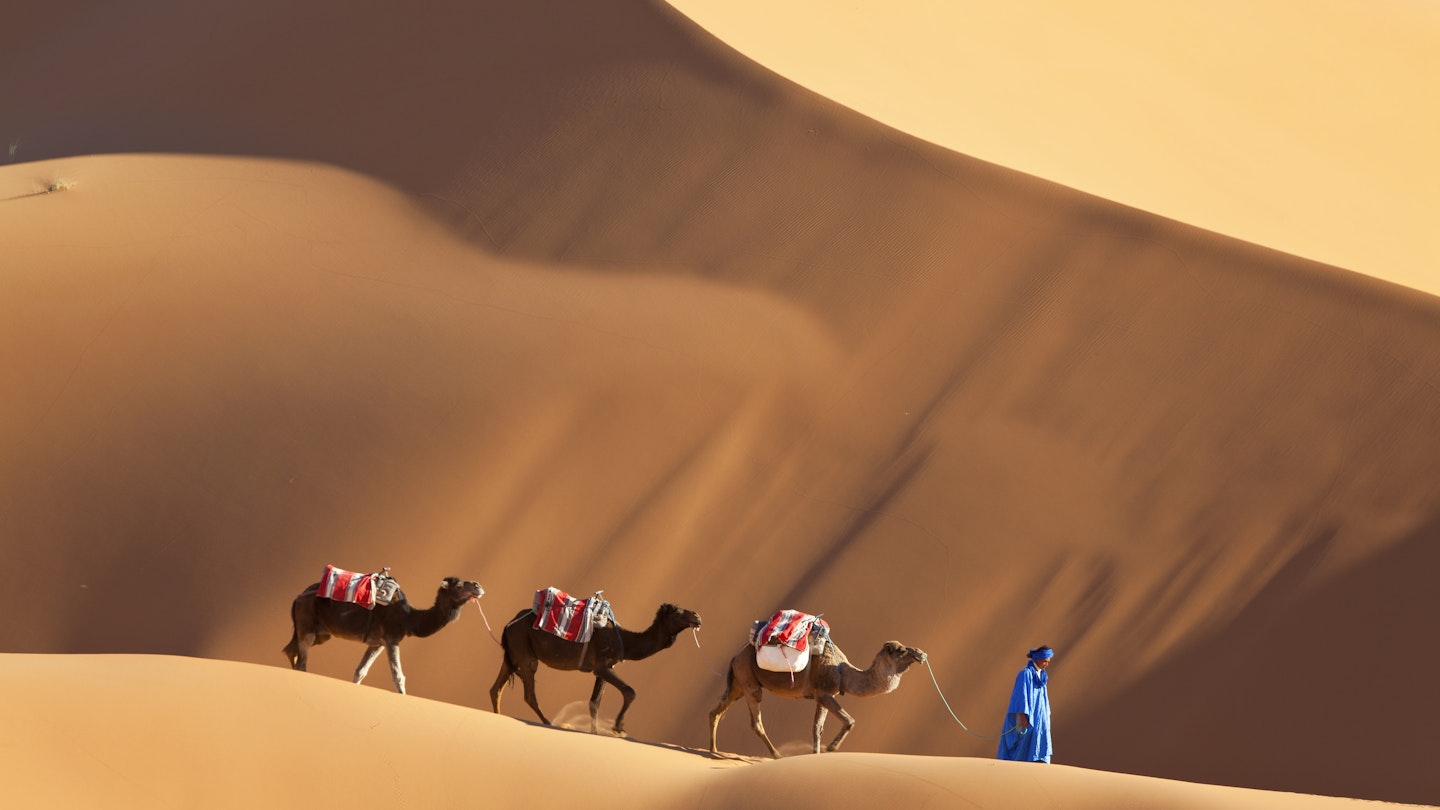
The best time to go to Morocco will depend on your plans when get here © Peter Adams / Getty Images
Morocco is a fantastic year-round vacation destination, but choosing the best time of year to travel will depend on your interests and holiday needs.
The mild months from October to April see an influx of travelers from the northern hemisphere, who flock to North Africa to escape long winters in Europe or North America. For the rest of the year – especially in July and August along the coast – Morocco is busy with domestic travelers and international visitors taking advantage of package holiday deals, music festivals and outdoor activities such as surfing, kiteboarding and hiking.
Whether you come for the sun, the surf, the wind sports, the outdoors, local festivals or the rich culture, here's our guide to the best times to travel to Morocco.

September is the best month for good weather and fewer crowds
Domestic and international travelers head back to school and work after the August summer holidays, so September is a great time to visit. The weather is warm, with long sunny days, balmy waters and quiet beaches. It's also an excellent time to visit cultural sights in coastal cities such as Essaouira , Rabat , Casablanca , Tetouan , and Tangier . Inland, Marrakesh and surrounding regions can still be quite hot in September.

September to November and March to May are best for hiking and visiting Marrakesh
For sunny days and temperatures that aren't too hot or cold, visit Marrakesh in spring (March to May) or fall (September to November). Avoid the summer months of June to August unless you have a love affair with air conditioning and 38°C (100°F) heat; nights can be cold from December to February, especially in riads (courtyard homes) without central heating.
During May and October, you can travel comfortably to Morocco’s portion of the Sahara Desert – expect to find most desert camps closed from June to August due to the excessive heat. Conversely, days are shorter during the winter months from December to February and the nights and early mornings can be freezing, particularly when sleeping under canvas. Sandstorms occur from January to May, but Saharwians are used to these storms; follow their lead by wearing a Tuareg scarf to protect your face from the sand and sun.
The High Atlas region is a year-round hiking destination, but the weather is mildest from April to June and September to November, creating ideal trekking conditions for all fitness levels. If you visit in May, you'll see the M’Goun Valley come alive for the Festival des Roses. If you prefer to trek at lower altitudes consider a visit to the Anti-Atlas mountain range in springtime. This season is for wildflowers, spring blossoms in the trees and quiet hiking trails. An annual almond blossom festival takes place in Tafraoute in February or March, depending on when the trees flower and the harvest.
The mild spring and fall are also the best times to see migratory birds. The top birding spot on the coast is Oualidia ; its peaceful lagoon is a haven for resident and migratory waterbird species. Souss-Massa National Park also attracts migratory birds, which gather here in large numbers before or after their Atlantic crossings.

December to February is the season for celebrations, surfing and skiing
The weather can be cold and wet from December to February, especially in the north, but winter is an excellent time for city and cultural explorations. In Marrakesh and other hubs popular with foreign residents and visiting travelers, you can enjoy epic celebrations over the Christmas and New Year holidays. However, accommodation prices increase significantly over the peak vacation dates from December 22 until January 7. Yennayer, the Amazigh New Year, falls in the first week of January, so there may be some local festivities around at this time as well.
In deep winter, the peaks of the High Atlas are covered in snow – perfect for those who prefer to ski down rather than hike up mountains. The snow can create hazardous conditions for driving on remote roads, and some routes will close, but the main skiing areas – Oukaimeden and Ifrane – are accessible and skiing will be a fun addition to your North African adventure.
Winter is when the Atlantic swell is most consistent on the Moroccan coast. December to February sees the largest waves, and surfers flock to Taghazout, Mirleft , Sidi Ifni and other spots along Morocco’s west coast. A lively center for surf culture, Taghazout hosts an annual surf expo in October and international competitions such as the World Surf League in January and February.
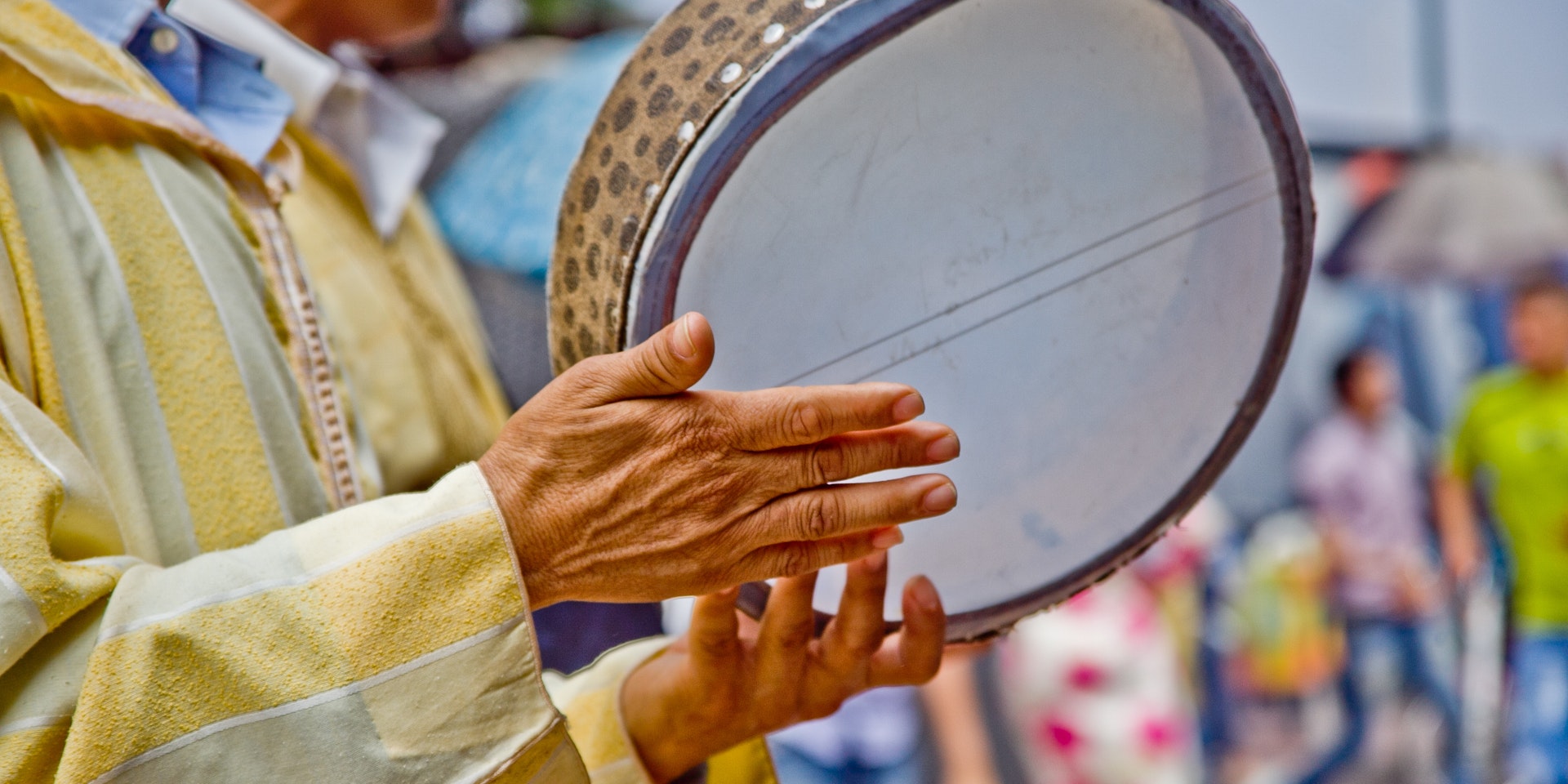
June to September is the best time for festivals and kitesurfing
Morocco’s long summer days and nights are ideal for outdoor music events, as bands and musicians fill venues nationwide. Top festivals to look out for include the Fez Festival of World Sacred Music (dates vary from June to September), Essaouira’s Gnaoua World Music Festival in June, the Asilah Festival in July and October and Casablanca’s Jazzablanca in June. Rabat’s Mawazine – one of the world’s largest festivals – is set to return in 2024 after a three-year hiatus. Book accommodations well in advance and be prepared for higher prices.
During July and August, inland temperatures can soar to over 38°C (100°F), but on the Atlantic coast cooling breezes and misty fog keep temperatures down to around 27°C (80°F). Agadir , Dakhla and Essaouira are particularly popular with domestic travelers in August thanks to the long sunny days and lifeguard-protected beaches. While the Moroccan sun is strong, beach parasols and covered outdoor seating areas are easy to find, and the ocean is calmer and warmer – perfect for swimming, riding pedalos and stand-up paddleboarding. The mellower waves from June to November are ideal for beginner and intermediate surfers.
Kitesurfing and windsurfing are possible year-round at several flat water spots in Essaouira and Dakhla due to consistent trade winds from the Atlantic, but April to September brings reliable high winds thanks to the thermal effect along the Moroccan coastline. An annual international kitesurfing competition is held in Dakhla at the end of September, drawing competitors and spectators from around the world.
Experience Morocco without the crowds during Ramadan
Check the dates for Ramadan, the Muslim month of fasting; these change each year. This important annual festival is a quiet and spiritual time to experience Morocco. Though many food establishments close during the day, you'll still find places to eat at hotels.
This article was first published May 25, 2021 and updated Mar 11, 2024.
Explore related stories

May 20, 2024 • 5 min read
We asked four travel writers about the their favorite under-the-radar vacation spots in their native Spain.
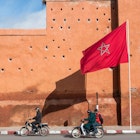
Mar 29, 2024 • 9 min read

Feb 7, 2024 • 5 min read

Jan 31, 2024 • 6 min read

Jan 27, 2024 • 15 min read

Jan 17, 2024 • 8 min read

Jan 17, 2024 • 6 min read

Jan 2, 2024 • 11 min read

Dec 26, 2023 • 5 min read

Dec 15, 2023 • 5 min read
Weather & Climate
Getting Around Morocco
Places to Visit
Guide to Moroccan Riads
Things to Do in Morocco
Things to Do in Marrakesh
Guide to the Marrakesh Medina
Best Beaches
Annual Events
Things to Do in Fez
Things to Do in Meknes
Visiting Chefchaouen
Food to Try
Best Restaurants
Best Time to Visit
The Best Time to Visit Morocco
:max_bytes(150000):strip_icc():format(webp)/anoukmarrakech-56a373305f9b58b7d0d20299.jpg)
TripSavvy / Chris VR
A diverse country with something for all kinds of travelers, there is no bad time to visit Morocco . Still, generally, the best time to visit is during April and May or September to November, the country's shoulder seasons. During these months, the climate is neither too hot nor too cold, and there are fewer tourists to contend with than there would be during the peak summer or winter vacation periods. However, those hoping to trek the Atlas Mountains or surf the waves on the Atlantic coast may find that other times of the year better suit their needs.
The Weather in Morocco
For many visitors, Morocco's weather is the single largest factor in determining the best time to travel. Morocco follows the same basic seasonal pattern as any other Northern Hemisphere country, with winter lasting from December to February and summer lasting from June to August.
During the peak summer months, the weather can get uncomfortably hot, especially in Marrakesh, Fez, and southwest Morocco (remember that the further south you go, the closer you are to the Sahara Desert). Coastal destinations like Tangier, Rabat, and Essaouira are a more comfortable choice at this time of year because they benefit from the cool ocean breeze. Despite the heat, many people choose to visit Morocco at this time because it coincides with the European summer vacation.
Winters are generally mild, although temperatures at night can fall dramatically, with record lows of 30 degrees Fahrenheit recorded in Marrakesh. A dusting of snow is not unusual in northern Morocco, and, of course, the Atlas Mountains are prone to heavy snowfall in winter. You can even ski at Oukaïmeden , located about 50 miles south of Marrakesh. Winters in the north of the country and along the coast can be pretty wet, while winters in the south are drier but colder, especially at night.
Kodiak Greenwood / Getty Images
The Best Time to Trek the Atlas Mountains
Although it's possible to trek the Atlas Mountains year-round, spring (April to May) and fall (September to October) generally offer the best weather. Although summers in the Atlas Mountains are typically mild and sunny, temperatures in the mountain valleys often exceed 86 degrees Fahrenheit, while afternoon thunderstorms are not uncommon. In winter, nighttime temperatures can plunge to 41 degrees Fahrenheit or lower, while snow precautions, including crampons and ice axes, are required above 9,800 feet. Weather in the Atlas Mountains can be unpredictable at any time of year, and conditions depend heavily on what elevation you're planning to trek to.
The Best Time to Visit the Coast
Weather-wise, the best time to visit Morocco's beaches is during the summer, when average temperatures of around 80 degrees Fahrenheit offer plenty of opportunities for catching rays and an escape from the intense heat of the country's interior. Sea temperatures are also at their warmest during this time of year, with the average water temperature for July recorded at 70 degrees Fahrenheit. However, summer is also peak tourist season, so book well in advance, especially if you plan on visiting hotspots like Essaouira or Agadir. If you prefer fewer crowds and lower prices, consider a trip in spring or fall instead.
Those attracted to the Atlantic coast by its reputation as one of Africa's top surf destinations should ignore the advice above and travel to top spots like Taghazout and Agadir during the winter months. The swell is consistently good at this time of year, and surf breaks are operating at their best. With an average December sea temperature of 65 degrees Fahrenheit at Taghazout, a thin wetsuit is usually enough to keep out the cold even in the depths of winter.
The Best Time to Visit the Sahara Desert
If you're planning a trip to the Sahara Desert , the most comfortable time to do so is during fall or early spring. In this way, you'll be able to avoid the bone-dry landscapes and scorching temperatures of summer (which average around 115 degrees Fahrenheit) and the freezing nighttime temperatures of winter. At any time of the year, temperatures tend to plummet after dark, so it's best to bring a warm jacket regardless of when you plan to visit. Although spring is generally a good time to visit the desert, it's important to remember that April, in particular, can bring with it the sandstorms of the Sirocco wind.
Morocco's Festivals & Events
Morocco is home to a whole host of exciting annual festivals, some of which are well worth planning your trip around. Some, like the Kelaa M'Gouna Rose Festival and the Erfoud Date Festival, are connected to the harvest and take place in the same month every year (with these particular festivals taking place in April and October, respectively). Others, like the Essaouira Gnaoua and World Music Festival and the Marrakesh Popular Arts Festival, are summer extravaganzas that rely on good weather to hold performances and events outside. Islamic festivals like Ramadan and Eid al-Adha also take place at specific times of the year and offer a fascinating insight into Moroccan culture.
Spring weather in Morocco is warm and dry. Snow is gone from all but the mountain's highest peaks, and while ocean temperatures are cooler, it's nothing that a wetsuit won't fix. Crowds are lighter in the spring, too.
Events to check out:
- Fez hosts the Gnaoua Music festivals in May or June, combining modern music with historical traditions.
- Ramadan typically takes place in the spring or early summer.
Moroccan summers can be quite hot, especially the further inland you go. With school holidays, summer is a popular time for families, so hotels and resorts (especially those with pools) will book up fast.
Fall is a great time to visit Morocco's cities as well as the coast. With cooler, dry temperatures, it's also an ideal time for those interested in great hiking weather.
- Eid al–Adha is held in September, spanning three days. Muslims commemorate the honor of Abraham throughout the country by sacrificing animals.
Visiting Moroccan cities in the winter can be quite pleasant, as temperatures usually aren't too cold and crowds are minimal. There will be snowfall at higher elevations and temperatures drop in the desert at night.
- The International Film Festival is held annually in Marrakesh. The festival was established in 2001 to promote all forms of cinema.
Morocco is a country in northern Africa, bordering the Atlantic Ocean and Mediterranean Sea.
There is no bad time to visit Morocco. That said, the best time to visit is during April and May or September and November, when crowds are low and air and lodging rates are inexpensive.
The rainy season in Morocco is typically October through April. However, most of Morocco is situated north of the Western Sahara Desert, making this season only mildly wet.
International tourist travel to Morocco is serviced by a full range of carriers, including, but not limited to, Air France, Emirates, Delta, British Airways, Iberia, Lufthansa, KLM, TAP Portugal, and Aeroflot.
Weather Atlas. "Marrakesh, Morocco - Detailed Climate Information." Retrieved Jan. 28, 2021.
Weatherbase. "Marrakech, Morocco Koppen Climate Classification." Retrieved Jan. 28, 2021.
Britannica. "Atlas Mountains- Climate." Retrieved Jan. 28, 2021.
Sea Temperature. "Essaouira Sea Temperature." Retrieved Jan. 28, 2021.
SeaTemperature.org. "Taghazout Sea Temperature | December Average." Retrieved Jan. 28, 2021.
Weather and Climate. "Climate and averagemonthly weather in Merzouga." Retrieved Jan. 28, 2021.
The Top 15 Things to See and Do in Morocco
The Complete Guide to Climbing Morocco's Mount Toubkal
Your Trip to Morocco: The Complete Guide
The Best Time to Visit Cape Town
10 of the Best Places to Visit in Morocco
The Best Countries in the World for Adventurous Travelers
Weather in Morocco: Climate, Seasons, and Average Monthly Temperature
10 of the Best Annual Festivals and Events in Morocco
The Best Time to Visit Spain
The Best Time to Visit Casablanca
The Best Time to Visit Naples, Italy
Top 10 Destinations in North Africa
Weather in Iceland: Climate, Seasons, and Average Monthly Temperature
10 of the Best Beaches in Morocco
The Complete Guide to the Atlas Mountains
10 Best Annual Events and Festivals in Africa
Change location
- UK / International
- Call toll-free until 8pm EDT
- 617-223-4521 617-223-4750 or
- REQUEST A QUOTE
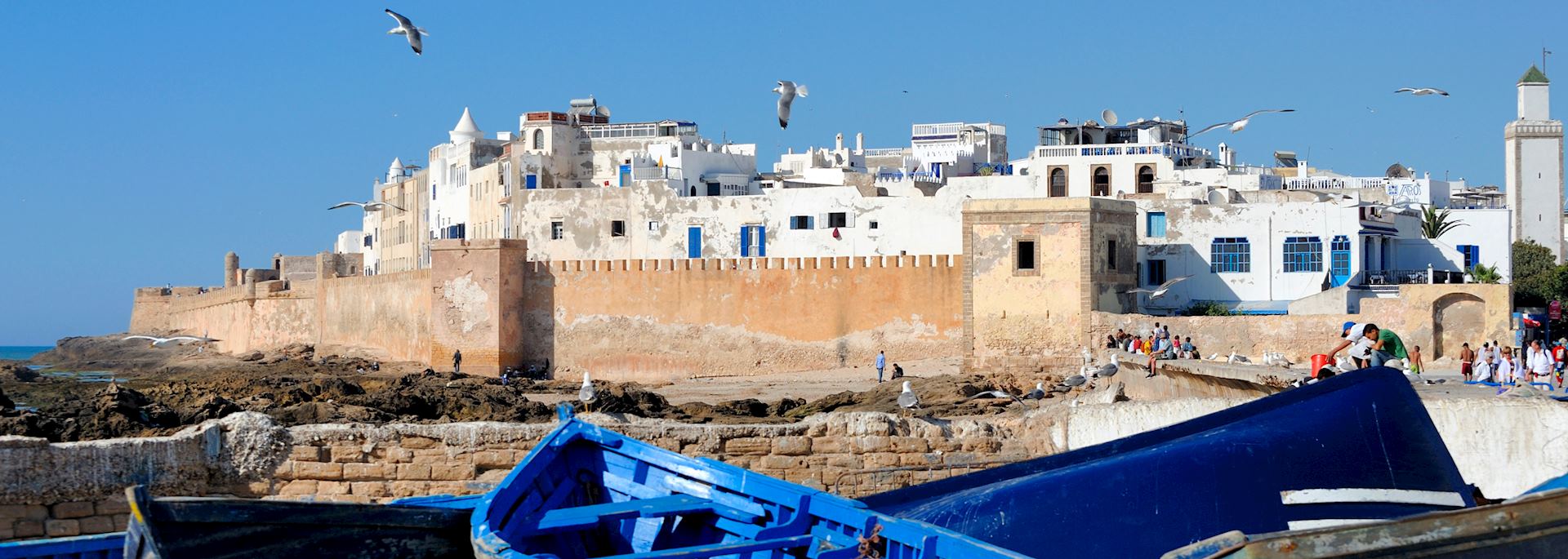
When is the best time to visit Morocco?
- Month-by-month
The best time to visit Morocco is during spring (mid-March to May) or fall (September to October). The weather is warm but pleasant, unlike the cold temperatures and snow of winter, or the scorching heat of summer.
The coastal regions can be visited year-round. In the winter they are pleasantly mild, while in the summer they bask in temperatures hovering around the high 70°Fs.
The High Atlas Mountains can also be visited all year round, although it does get cold in winter. The summer may still be a bit hot to embark on any long-distance hikes, but if the heat doesn’t bother you then conditions are fine any time between April and October. Outside these months, there is snow on the peaks, which makes hiking more dangerous, but creates some spectacular panoramas.
The Islamic festival of Ramadan will affect transport in Morocco. The dates vary each year, so it’s worth checking what they are while planning your trip.
- Make an inquiry
- Request a brochure
Month-by-month guide for traveling in Morocco
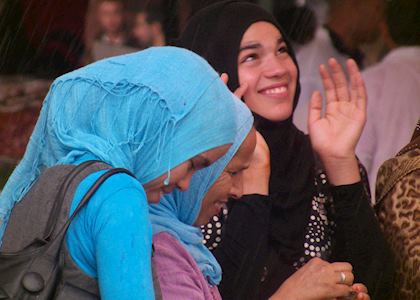
Visiting Morocco in January - February
A great time to visit if you prefer to travel away from crowds, allowing you to see Moroccans going about their daily life more authentically than during the hotter months. It is generally sunny and mild, but there is the chance of rain (good for wildflowers), and snow in the mountains. The desert is perfect for visiting now, but gets very cold at night.
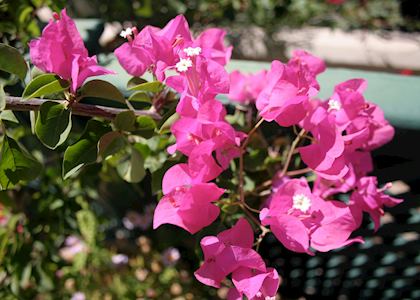
Visiting Morocco in March
The weather in March is much like the start of spring in any country. With flowers coming out and the sun shining, the weather is generally between 50°F and 68°F depending on the region, although it can become cooler. Snow and rain become rare at this time of year, but it would be best to pack clothing for all scenarios, as it can be unpredictable.
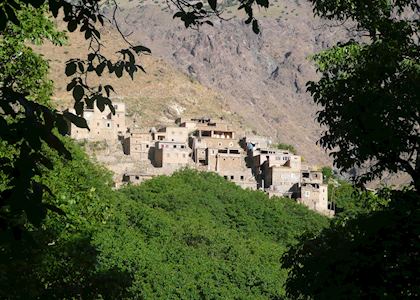
Visiting Morocco in April - May
This is a popular time to visit due to the favorable spring weather of between 59°F and 95°F from the High Atlas Mountains to the desert. Given the diversity of the landscape, weather can differ significantly from place to place and this is particularly true in spring when showers are common. Labour Day is held on the May 1. This can lead to the closing of some shops, banks and local schools, which can mean the main sites are busier with locals.
Events & Festivals
- Gnaoua and Sacred World Music festivals (May): Held in Essaouira and Fez respectively. The former unites historical Gnaoua musicians with modern day music, while the latter promotes spirituality and tolerance through music.
- Ramadan (April to May): While it can disrupt your daily routine, if you are fascinated by different cultures and religions, the religious month of Ramadan is an exciting time to visit. The breaking of the fast at sundown is an electric experience.

Visiting Morocco in June
June is one of the hotter months in Morocco, however, different regions like Essaouira and Tangier still stay relatively cool because they’re situated on the coast. If you’re looking for some peace and quiet, Morocco is great to visit in June because tourism is relatively low compared to some of the other months. This is the last month to visit the desert region before there's an influx of insects and snakes in July and August, as well as often unbearable heat.
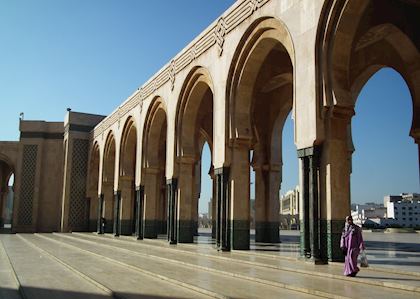
Visiting Morocco in July - August
July and August are the hottest months in Morocco so are not the ideal months to visit; however, they should not be ruled out. If you’re looking to escape the unpredictable US summer then this is a great time to visit. Coinciding with the school vacations makes this a popular time for families; as such, many hotels and riads do get booked up in advance, particularly those with swimming pools.
Daytime temperatures can reach over 110°F, so exploring and sightseeing is best done in the morning or evening, making this is a good time to combine activities and relaxation. This is also a great time to visit the Atlantic coast, which at other times of year can feel on the chilly side.
Whether you are seeking water sports or delicious seafood, Essaouira is a summer highlight. The Atlas Mountains are cooler than the cities, although still very hot. While summer is not ideal if you're wanting to do serious trekking, it is great for short morning walks and lying by a pool with panoramic mountain views.
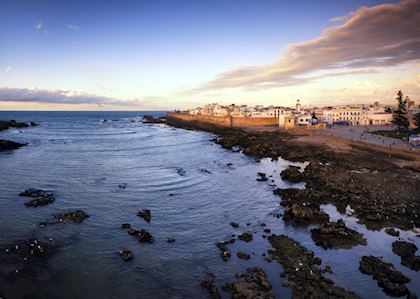
Visiting Morocco in September
Cooling down after the hot summer months, September is an ideal time to visit Morocco as you can enjoy the pleasant warm weather and clear blue skies the country offers as it heads into autumn. The beaches are not as busy from local holidaymakers, the cities welcome gentle breezes and exploring the desert becomes pleasant again.
- Eid al–Adha (September): The 'Feast of Sacrifice' is celebrated by Muslims over three days. Animals are sacrificed in honor of Abraham throughout the country and shops shut down as families gather together, making it a different but interesting time to visit.

Visiting Morocco in October
October is one of the best months to visit Morocco, as temperatures are cooler and more comfortable for sightseeing. This is a great month for hiking in the mountains and visiting the Atlantic coast, with temperatures dropping in November and Essaouira becoming very windy. As such, October is a month that books up quickly, and trips for this time of year should be organized far in advance.
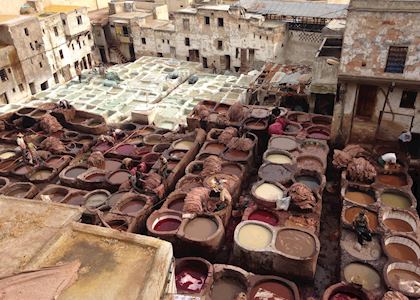
Visiting Morocco in November - December
The latter months of the year are a great window to explore the imperial cities of Morocco. The sunny but cooler days provide a comfortable climate to discover the colorful sights and sounds of Marrakesh and Fez . Other regional centers, such as the coastal town of Essaouira and the High Atlas Mountains , are not to be missed either, but coastal winds and potential snow in the mountains will naturally bring colder weather; particularly in the evenings. One thing to bear in mind when considering traveling during the winter months is that not all riads — particularly not those in the north of the country — have adequate heating, so it's advisable to bring warm layers of clothing.
- The International Film Festival: Held annually to promote and celebrate all forms of cinema, the festival was established in 2001 by King Mohammed VI, and takes place in Marrakesh.
Morocco Climate Guide
Why travel with audley.
- 100% tailor-made tours
- Fully protected travel
- Established for over 25 years
- 98% of our clients would recommend us

Travel advice
Practical tips for traveling to Morocco, from social protocols to guidance on money matters, with a link to the latest US State Department travel advice.

Request our brochure
Covering all seven continents, The World Your Way shows you how you can see the world with us. It features trip ideas from our specialists alongside hand-picked stays and experiences, and introduces our approach to creating meaningful travel experiences.
Trip ideas and travel guides for exploring Morocco

Marrakesh, the High Atlas & Essaouira
10 days from $4,275pp

Imperial cities & the desert
11 days from $6,595pp
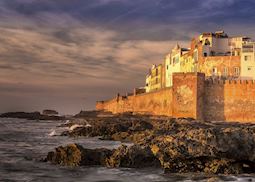
What to do in Morocco: our highlights guide
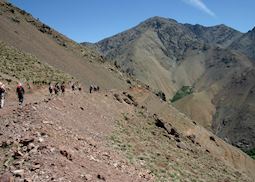
Walking and trekking vacations in Morocco


31st May 2024
Best Time to Visit Morocco: A Month-By-Month Weather Breakdown (2023)
Are you planning a trip to Morocco and wondering when is the Best time to visit Morocco?
Well, you’re in for a treat because we’ve got the inside scoop for you!
As experienced travel writers who have explored every nook and cranny of this magical land, we’re here to share our tips and insights to ensure you have an unforgettable experience.
From our past experience of leading group trips here and our last visit to Morocco , we’ve learned firsthand the best time to visit Morocco . So, listen up and get ready to delve into the dos and don’ts of Moroccan travel.
From cultural etiquette to safety precautions and everything in between, we’ve got you covered in this blog post. Let’s dive in and discover how to make the most of your Moroccan adventure while avoiding any missteps along the way!
Tourist Season in Morocco
The peak tourist season in Morocco spans from the months of March to May and September to November. During these periods, the weather is generally pleasant, with mild temperatures and lower chances of rainfall.
It’s an ideal time to explore the imperial cities of Marrakech , Fes, and Rabat, where bustling medinas, ancient palaces, and vibrant souks await. The spring season brings blooming flowers and lush greenery, adding to the picturesque charm of the country.
Morocco, a captivating North African gem, offers a diverse tapestry of landscapes, rich cultural heritage, and warm hospitality that entices travelers year-round. Understanding the tourist seasons in Morocco can help you plan your visit and make the most of your experience.
Off Season in Morocco
Exploring Morocco during the off-season months offers a unique and enchanting experience for travelers seeking to delve deeper into the country’s rich culture and breathtaking landscapes. The off-season typically refers to the months of January, February, and March when tourist crowds are thinner, and the weather is milder compared to the peak summer months.
During this time, Morocco reveals a quieter and more authentic side. The bustling cities, such as Marrakech, Fes, and Casablanca , are less crowded, allowing visitors to immerse themselves in the vibrant local culture and navigate the winding streets of the medinas at a more relaxed pace.
The atmospheric souks, filled with the scent of exotic spices, showcase their true colors, making it an ideal time to haggle for unique handicrafts, traditional textiles, and intricate Moroccan carpets.
Climate in Jordan
1. morocco in winter.
Morocco in winter casts a spell of enchantment as the country embraces a different kind of beauty. From December to February, the landscape transforms into a breathtaking winter wonderland. Snow-capped peaks of the Atlas Mountains create a stunning backdrop, while ancient cities like Marrakech and Fes exude a cozy ambiance.
Explore vibrant souks adorned with holiday decorations, sip traditional mint tea by a crackling fireplace, and indulge in hearty Moroccan cuisine that warms the soul.
The cooler temperatures make it an ideal time to wander through historic sites and take in the captivating architecture. Winter in Morocco offers a magical escape that will leave you with unforgettable memories.
2. Morocco in Summer
Morocco in summer unveils a vibrant and sun-drenched paradise. From June to August, the country comes alive with a delightful blend of cultural festivities and warm Mediterranean vibes.
Explore the bustling streets of Marrakech, immerse in the enchanting medinas, and indulge in the tantalizing flavors of Moroccan cuisine. Relax on the breathtaking beaches of Essaouira , hike the stunning Atlas Mountains, or venture into the Sahara Desert for an unforgettable camel trekking experience.
While the temperatures rise, Morocco’s rich heritage and natural beauty make it a captivating destination that beckons travelers to embrace the summer spirit and create lifelong memories.
3. Morocco in Monsoon
Morocco during the monsoon season is a unique and lesser-known side of this captivating country. Lasting from November to March, the monsoon brings a refreshing change to Morocco’s landscapes.
The arid deserts transform into lush green oasis, and the Atlas Mountains boast cascading waterfalls. While rainfall is not as intense as in other regions, the countryside blooms with vibrant colors, creating picturesque scenery.
Explore the medinas of Marrakech and Fez, adorned with glistening raindrops, and indulge in traditional Moroccan tea while listening to the rhythmic pitter-patter of rain. Embrace the serene beauty and tranquility of Morocco during the monsoon, a hidden gem awaiting discovery.
Month-by-Month Weather Breakdown
It’s an ideal time to explore cities like Marrakech and Fes, as the weather is pleasant for sightseeing. Don’t miss the Almond Blossom Festival in Tafraoute, where the pink almond trees create a stunning landscape. You can also embark on a desert adventure in the Sahara, with comfortable daytime temperatures for camel rides and camping under starry skies.
- Average Temperature: 12°C to 19°C.
2. February
It’s an excellent time for coastal towns like Essaouira, where you can enjoy mild weather and witness the Gnaoua World Music Festival, a vibrant event showcasing local and international artists. Adventure enthusiasts can hit the slopes in the Atlas Mountains for skiing and snowboarding, with resorts like Oukaimeden offering winter sports activities.
- Average Temperature: 11°C to 18°C
It’s a great time to visit the ancient city of Meknes and witness the Meknes International Festival, featuring music, art, and cultural performances. Explore the stunning valleys and gorges of the Atlas Mountains, or take a refreshing hike in the scenic Ourika Valley, known for its picturesque waterfalls and vibrant green landscapes.
- Average Temperature: 12°C to 20°C.
It’s an ideal month for visiting the iconic city of Casablanca and attending the Casablanca Jazz Festival, a musical extravaganza showcasing talented jazz artists. Nature lovers can explore the enchanting Dades Valley, famous for its breathtaking rock formations, and embark on a memorable trekking adventure in the beautiful Todra Gorge.
- Average Temperature: 14°C to 23°C.
Explore the historic city of Rabat and witness the Mawazine World Rhythms Festival, a celebration of diverse music genres from around the world. Head to the coastal town of Agadir for sun-soaked beach days and water sports activities. May is also a great time to hike the stunning landscapes of the Rif Mountains , immersing yourself in nature’s beauty.
- Average Temperature: 16°C to 25°C.
It’s a perfect time to visit the magical blue city of Chefchaouen and explore its narrow streets adorned with vibrant blue-painted buildings. Enjoy the lively atmosphere of the Gnaoua and World Music Festival in Essaouira , or unwind on the beautiful beaches of Tangier , where you can relax and soak up the sun.
- Average Temperature: 19°C to 28°C.
Escape the heat by heading to the cool climate of the Atlas Mountains, where you can enjoy breathtaking landscapes, trekking trails, and traditional Berber villages. For a unique experience, attend the Imilchil Marriage Festival, where local tribes celebrate with music, dancing, and traditional wedding ceremonies, providing a fascinating glimpse into Moroccan culture.
- Average Temperature: 21°C to 33°C.
Explore the vibrant city of Marrakech and immerse yourself in its bustling souks and stunning historical sites like the Bahia Palace. Enjoy the vibrant atmosphere of the Festival of World Sacred Music in Fes, featuring captivating performances from renowned artists. For adventure seekers, the coastal town of Taghazout offers excellent conditions for surfing and water sports.
9. September
It’s a pleasant time to visit Morocco’s cultural hubs, such as Marrakech and Fes, where you can explore historic sites without the intense summer heat. The Timitar Festival in Agadir showcases diverse music genres, celebrating the Amazigh culture. Outdoor enthusiasts can enjoy hiking in the scenic Rif Mountains or embark on a Sahara Desert excursion, experiencing the thrill of dune bashing and camping under the starry sky.
- Average Temperature: 19°C to 31°C.
10. October
The Erfoud Date Festival celebrates the harvest season with cultural activities and traditional performances. It’s a great time to visit the vibrant city of Marrakech, where you can explore the famous Jardin Majorelle and experience the lively atmosphere of Jemaa el-Fnaa Square. Coastal towns like Essaouira are ideal for windsurfing and kiteboarding.
- Average Temperature: 15°C to 26°C.
11. November
It’s a perfect time for cultural experiences, with the Tan-Tan Moussem showcasing traditional dances, horse shows, and camel races. Nature lovers can venture to the Atlas Mountains, witnessing the stunning autumn foliage. Exploring the historic city of Fez and its medina, a UNESCO World Heritage site, is a must-visit.
- Average Temperature: 11°C and 21°C.
12. December
The Imilchil Wedding Festival celebrates Berber traditions with traditional ceremonies and cultural performances. It’s an ideal time to visit the Sahara Desert , enjoy camel trekking and camp in traditional nomadic tents. Exploring the ancient Roman ruins of Volubilis or strolling through the charming blue streets of Chefchaouen are delightful experiences in this pleasant weather.
- Average Temperature: 9°C to 18°C.
Conclusion – Best Time to Visit Morocco
In conclusion, Morocco offers a rich tapestry of experiences, from exploring historic medinas and indulging in delicious Moroccan cuisine to immersing in the vibrant music festivals and basking in the sun on the southern Atlantic beaches.
To make the most of your journey, consider the best time to visit, such as the pleasant shoulder seasons of spring and autumn, and be mindful of cultural customs and safety precautions.
Whether you’re captivated by the bustling streets of Marrakesh or enchanted by the breathtaking landscapes of the Atlas Mountains, Morocco promises an unforgettable adventure filled with warmth, hospitality, and a true taste of North African charm.
FAQs – Best Time to Visit Morocco
When is the best time to visit morocco, what about the weather in morocco during february, is april a best time to visit morocco, what is the best time to visit morocco for mountain exploration, are there any music festivals in morocco during june, what is the ideal time to visit morocco’s southern atlantic beaches, when is the least busy time to visit morocco, related posts.
- 15 Things To Do In Casablanca : Discover Hidden Gems (2023)
- 10 Best Things To Do In Marrakech: Unforgettable Marrakech (2023)
- Best Things To Do In Tangier : 17 Thrilling Adventures (2023)
- 10 Unique Things To Do In Morocco: Unforgettable Experiences And Hidden Gems (2023)
- Sahara Desert: All You Need To Know Before You Go! (2023)
- 10 Best Hammams In Morocco You Can’t Miss (2023)
- 11 Jaw-Dropping Examples Of Moroccan Architecture (2023)
- A Complete Essaouira Travel Guide: History, Facts, Things To Do, How To Get (2023)
- The Ultimate Chefchaouen Travel Guide: History, Facts, How To Reach, Best Time To Visit (2023)
- 10 Must-Try Dishes In Morocco: Great Foodie’s Paradise (2023)
- 15 Unforgettable Experiences: Things To Do In Fes (2023)
- Best Time to Visit Morocco: A Month by Month Breakdown
- Top 10 Festivals And Events In Morocco: A Cultural Extravaganza
- Discover The 10 Best Riads In Morocco For An Unforgettable Escape (2023)
- 10 Mind-Blowing Local Customs And Traditions In Morocco
- Discover The 10 Majestic Royal Cities Of Morocco (2023)
- 10 Essential Morocco Visa Requirements For Great And Hassle-Free Travel
- Exquisite Traditional Moroccan Clothing Styles That Will Leave You Mesmerized!
- The Ultimate Adventure In The Rif Mountains: 15 Thrilling Experiences (2023)
- 15 Best Things To Do In Chefchaouen: Unforgettable Adventures (2023)
- Best Things To Do In Rabat: 14 Epic Adventures (2023)
- 10 Best Things To Do In Tetouan: Unleash A Great Wanderlust (2023)
- Agadir Travel Guide: History, Facts, How To Reach, Best Time To Visit (2023)
- Atlas Mountains: 10 Reasons To Visit Atlas Mountains (2023)
- Shopaholic’s Delight: Uncovering The 10 Best Souks Of Morocco (2023)
- 10 Interesting Facts About Berbers That Might Surprise You!
- Best Medinas In Morocco That You Should Definitely Explore (2023)
- The Ultimate Meknes Travel Guide: History, Facts, Things To Do, How To Reach (2023)
- The Ultimate Ouarzazate Travel Guide: History, Facts, Things To Do, How To Reach (2023)
- 13 Souvenirs To Buy From Morocco: Discover The Greatness Of Morocco (2023)
- Discover The Top 10 Exquisite Moroccan Handicrafts That Will Mesmerize You
- 9 Best Camel Treks In Morocco: Experience An Unforgettable Adventure (2023)
Howdy. I started this brand as a hobby business as I loved travelling and Hiking. With the support of 1000s of people who joined our group trips and treks in past 7 years, we have grown to 13 different countries. Looking forward to see you too in one of those trips one day.

Check out our other trips

No products in the cart.
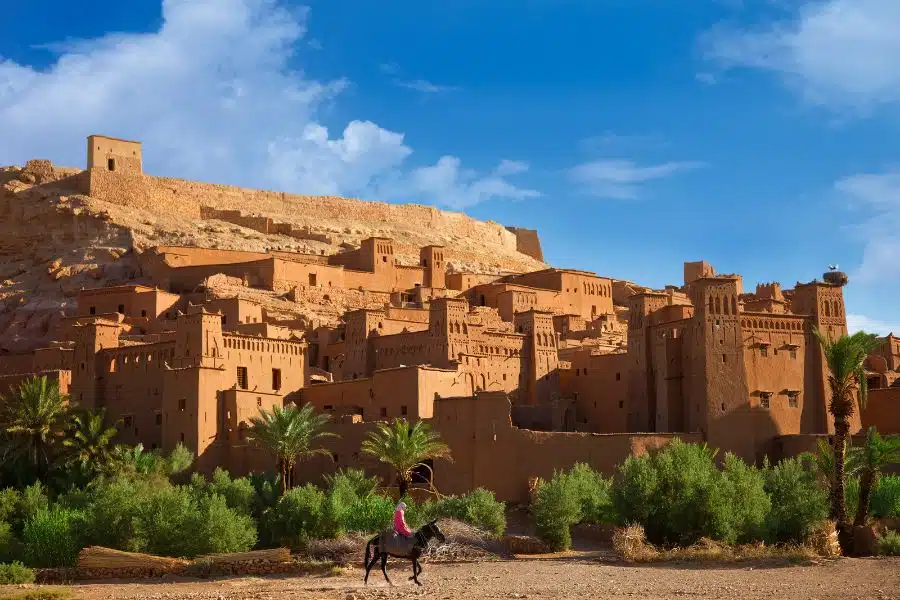
Best Time to Travel to Morocco: A Traveler’s Guide
The perfect timetable for your morocco trip.
Traveling is an adventure, and choosing the right time to embark on your journey can make a significant difference. When planning a trip to Morocco, understanding the best time to visit can enhance your experience. This comprehensive guide will help you identify the perfect period to explore Morocco’s vibrant culture, picturesque landscapes, and exotic cities. Browse our discounted Morocco tours and enjoy the best deals by booking online.
January – February: A Cool Winter Escape
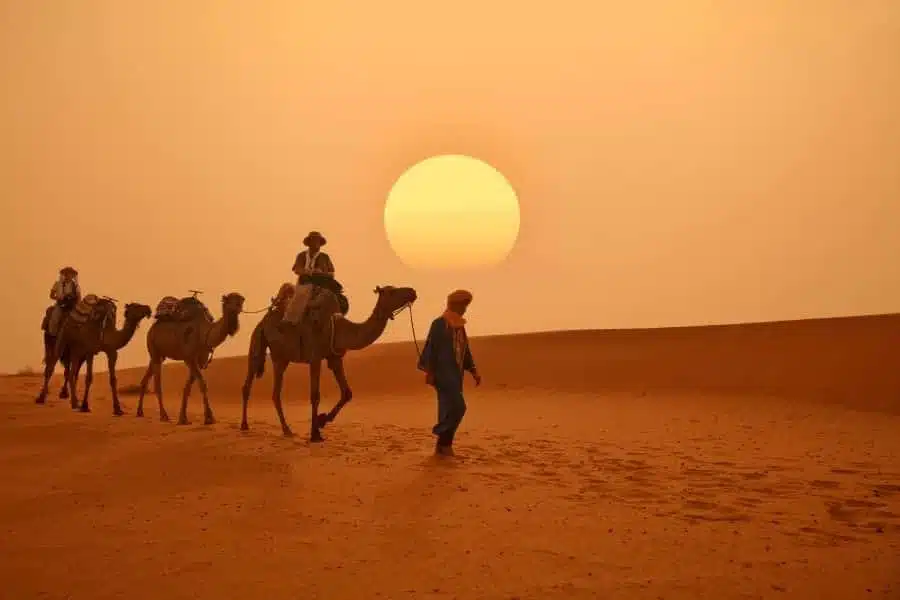
Winter in Morocco is the perfect time for those seeking cooler temperatures and smaller crowds. The coastal cities of Casablanca, Rabat, and Tangier enjoy mild temperatures, ranging from 50 to 65°F (10 to 18°C), making it ideal for strolling through the medinas and exploring historical sites. However, pack some warm layers, as evenings can be chilly. If you’re an adventure seeker, January and February are the peak months for skiing in the Atlas Mountains.
March – April: Springtime Blossoms
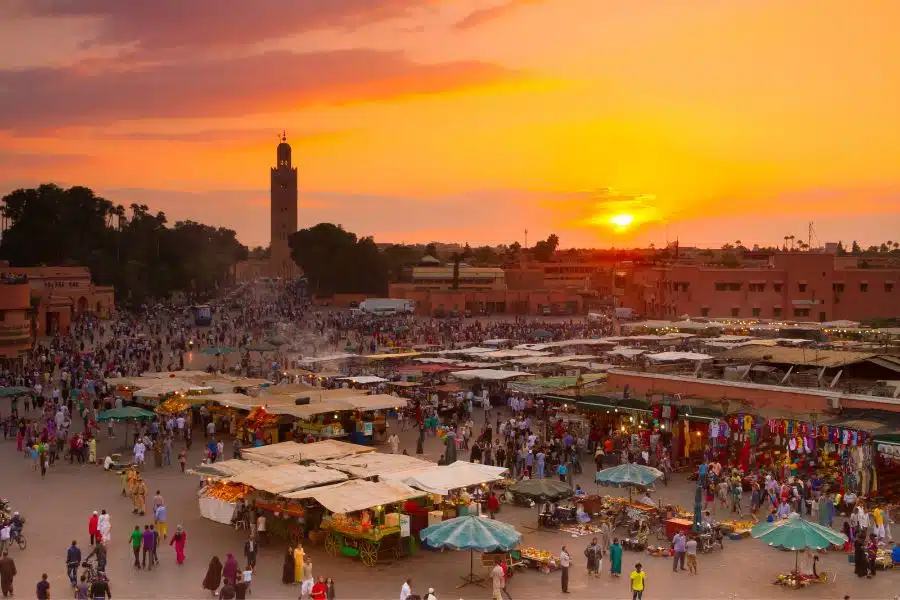
Spring is an excellent time to visit Morocco, as the countryside bursts into life with blooming flowers and lush green landscapes. The temperatures are pleasantly warm, averaging 60 to 75°F (16 to 24°C). This is the ideal season to explore cities like Marrakech, Fes, and Chefchaouen. The shoulder season also means fewer tourists, making your experience more authentic and relaxed. Don’t miss the Almond Blossom Festival in Tafraoute, which takes place in March.
May – June: Basking in the Sun
As summer approaches, Morocco begins to heat up, with temperatures ranging from 70 to 90°F (21 to 32°C). This is the perfect time to hit the beaches in Essaouira and Agadir or explore the stunning blue city of Chefchaouen. The vibrant Gnaoua World Music Festival takes place in Essaouira in June, showcasing a diverse range of musical genres and attracting international artists.
July – August: The Hottest Months
The peak of summer in Morocco can be sweltering, with temperatures soaring above 100°F (38°C) in cities like Marrakech and Fes. It’s the perfect time to visit coastal towns like Tangier, Asilah, and Tetouan, where the sea breeze offers some respite. However, be prepared for larger crowds, as this is also the peak tourist season. If you’re a fan of traditional music, don’t miss the Fes Festival of World Sacred Music held in July.
September – October: A Golden Autumn
Autumn is another great shoulder season in Morocco, with temperatures cooling down to a comfortable 65 to 80°F (18 to 27°C). This period allows for more pleasant exploration of the cities and countryside, as well as outdoor activities like hiking in the Atlas Mountains or camel treks in the Sahara Desert. In September, the Imilchil Marriage Festival offers a unique glimpse into Berber culture and traditions.
November – December: A Cultural Winter Experience
As winter returns to Morocco, the temperatures drop to 50 to 70°F (10 to 21°C), offering a refreshing change from the scorching summer months. The lower tourist numbers provide a more intimate experience in the cities and at major attractions. In December, the Marrakech International Film Festival draws film enthusiasts and celebrities from around the world.
Conclusion:
The best time to visit Morocco largely depends on your personal preferences and interests. Whether you’re looking for a winter adventure in the Atlas Mountains, a sun-soaked beach getaway, or a cultural immersion in the bustling cities, Morocco has something to offer in every season. Choose the time that suits your desires and make the most of your Moroccan adventure.
One Nation Travel offers the best Morocco tour packages , catering to various interests and preferences. With their expertise and extensive knowledge of the country, you’ll enjoy a tailored and unforgettable Moroccan experience, no matter when you choose to visit.
- What is the best month to visit Morocco? Spring (April-May) and Autumn (September to October) are often considered the best months to visit Morocco due to mild weather and lesser crowds.
- Is Morocco a good winter destination? Yes, if you prefer cooler temperatures and don’t mind occasional rainfall, you can enjoy the winter charm of Morocco.
- Can I visit the Sahara desert in the summer? It’s not recommended due to extreme heat. The best time to visit the Sahara is in the cooler months, from October to early May.
- What should female travelers wear in Morocco? Respectful attire, covering shoulders and knees, is generally recommended for female travelers in Morocco.
- Does it snow in Morocco? Yes, it snows in some parts of Morocco, especially in the Atlas Mountains during winter.
Top 3 Highly Recommended Tours of Morocco
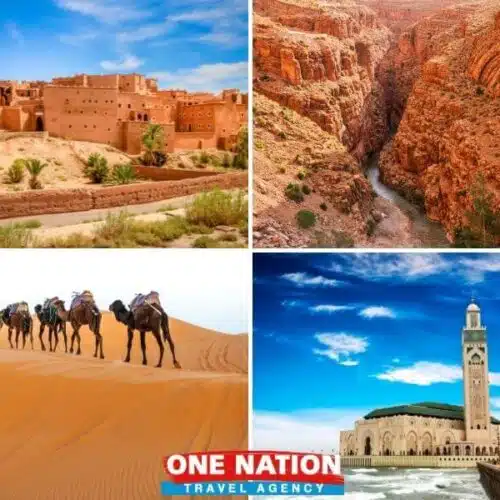
Similar Posts

Is It Safe to Travel to Morocco in 2023
Explore Morocco with confidence! Learn about the country’s safety, and follow our tips for a worry-free trip. Embrace the culture and create unforgettable memories.

Top 15 Must-See Attractions in Morocco: A Traveler’s Guide
Discover the top 15 attractions in Morocco, from the bustling souks of Marrakech to the serene Sahara Desert. Perfect for adventurers and culture seekers.

The Ultimate Guide to Morocco: Discover Exotic Beauty & Culture
Venture through the magic of Morocco with our Ultimate Guide. Explore vibrant souks, historic landmarks, mouthwatering cuisine, and captivating landscapes.

Can Americans Travel to Morocco
Find out if Americans can journey to Morocco with our comprehensive guide. Uncover visa info, ideal travel times, must-see attractions, and beyond. Dive in!
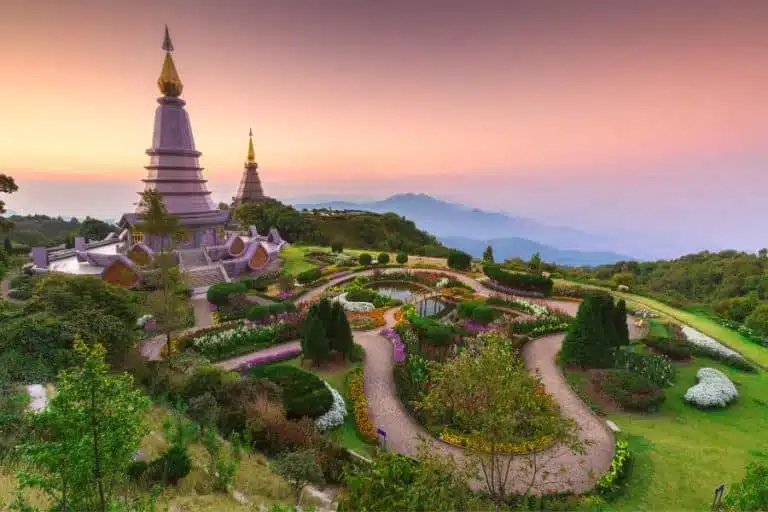
The 6 Most Popular Travel Destinations for Americans in 2024
Explore the six most popular travel destinations for American travelers – Egypt, Turkey, Greece, Jordan, Morocco, and Thailand – offering a wealth of cultural experiences, historical sites, and thrilling adventures.
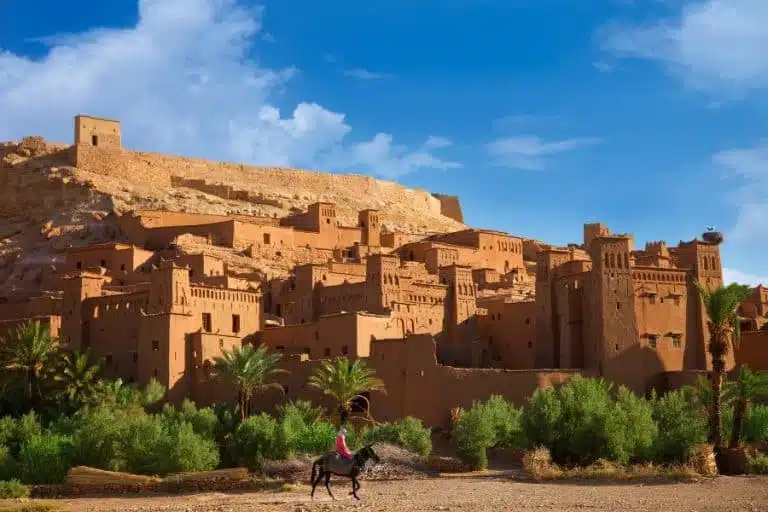
The Ultimate 7-Day Morocco Itinerary: A Journey to Remember
Discover Morocco in 7 Days: From the bustling souks of Marrakech to the tranquil Sahara dunes, our Ultimate Morocco Itinerary offers an unforgettable journey.
START PLANNING YOUR TRIP
Our team of experts have a wealth of knowledge and experience to help you plan your adventure of a lifetime.

Climate - Morocco

- Atlantic coast - Tangier, Casablanca, Agadir, Essaouira
- Mediterranean coast - Al Hoceima, Tétouan
- Inland areas - Marrakesh, Meknes, Fez
- Mountain areas - Ifrane
What to pack
Atlantic coast.
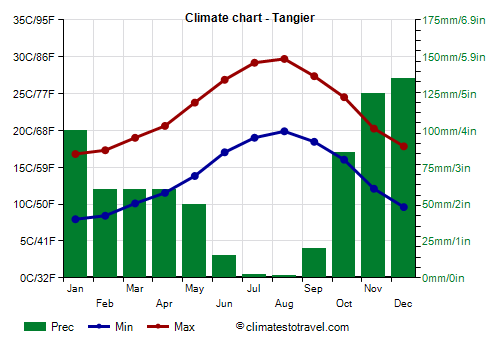
Mediterranean coast
Inland areas.
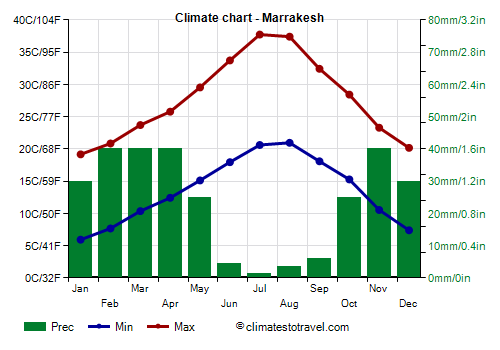
Mountainous areas
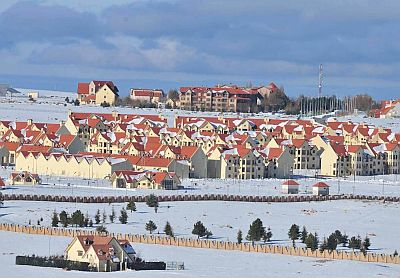
Travelguide Marrakech
Tips for your holiday in Morocco

The weather in Morocco: The best times to travel, weather data and tips for your holidays
Morocco can generally be divided into three regions with contrasting climates. These areas feature significant differences in the weather. Reading this article will help you to work out what time of year is best for you in terms of the weather and what to look out for when planning your trip to Morocco. You’ll also find travel tips and weather charts for selected locations.
It may be helpful to imagine the Moroccan climate as a large plate of couscous royale. It’s warm, satisfies the appetite of the typical sun worshiper and is easy to digest. However, just like couscous, not every mouthful tastes exactly the same. Therefore, you’ll find the weather in Morocco can differ considerably between regions. Trying to give a generic weather forecast for the entire country is impossible in terms of accuracy.
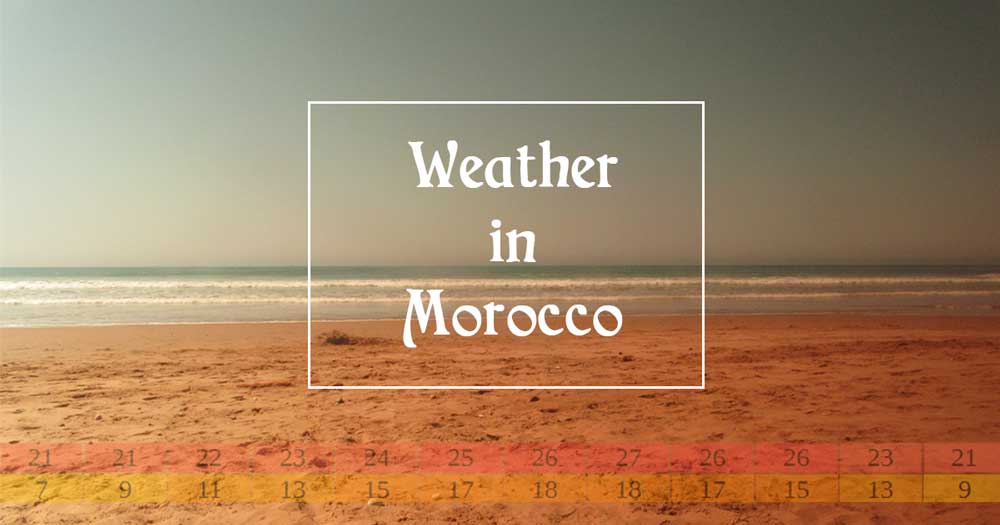
A far better solution is to look at the weather region by region. Here’s the place to find information and weather data for popular destinations like Northern Morocco, the Rif Mountains, Essaouira, the Atlantic coast, Imlil and the High Atlas. You can also find out about the weather in the desert areas on the edge of the Sahara. Of course, there’s also detailed information on the weather in Marrakech.
A general overview: climate zones, temperatures and the best times to travel
The Moroccan weather can be divided into three different regions, all different and all subtypes of the sub-tropical climate. The main influence on a region’s weather is the distance from the sea, as well as and the role of the trade winds. Another variable that affects the Moroccan weather is the Atlas Mountains. The High Atlas forms a climate barrier, separating the mild climate of the coastal regions from the continental climate further inland. Also, the Atlas Mountains act as a natural border to the desert areas in the south, which have their own climate.
The Moroccan Atlantic coastal stretch enjoys a maritime climate with high annual rainfall. Differences between night time and daytime temperatures are less dramatic. The Atlantic Ocean is the reason for this more balanced climate, which can be explained by the fact that the ocean stores heat and releases it more slowly than air. Thanks to this influence, the weather on the Atlantic coast generally features hot summers with little rain and mild winters. Humidity is high.
Going further inland from the coast, the climate starts to change to typically continental weather. There’s more of a noticeable difference between night time and daytime temperatures, as well as the weather in summer and winter. In the middle of the country, humidity and annual rainfall levels are relatively low. In the deserts on the edge of the Sahara, the climate is hot and dry. This region hardly ever has any rainfall.
The weather in selected regions of Morocco
As already mentioned, the weather in Morocco changes not only from season to season, but also greatly between the different regions. In fact, you can only make one generalisation about the weather in Morocco: It’s always warmer than in Central Europe. This is a good sign when going on a Moroccan holiday . But if you’re planning any special activities , for example, a desert tour or mountain hiking in the High Atlas, you should keep track of the weather and check to see if the forecast is suitable for your tour.
The weather in Northern Morocco and Fes
The climate on the northern coast of Morocco and in the Rif mountains benefits from the balancing influence of the Mediterranean. Warm, dry summers and relatively mild winters are typical of this region. However, during the cold season, the north of the country is colder than the south. October to March also see more rain than the summer months.
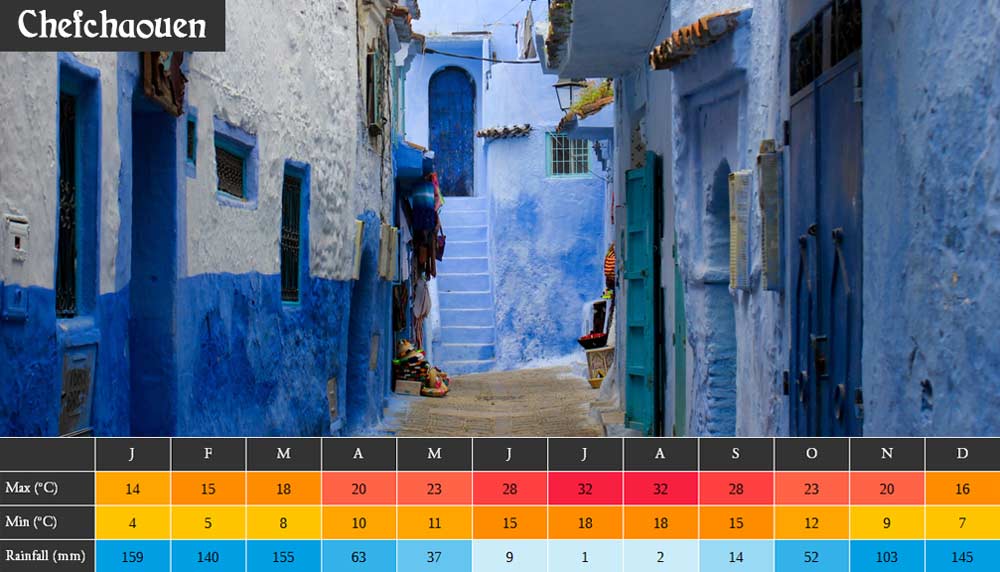
In the Fez region, the Mediterranean doesn’t influence the weather much and there’s significantly less rain. However, summer days in the city at 410 meters above sea level can be very hot. The months for better weather in Fez are April to mid-July and September to mid-November. Even in January, the thermometer can climb to over 16°C. This makes it a tempting place to take a break from the European winter.
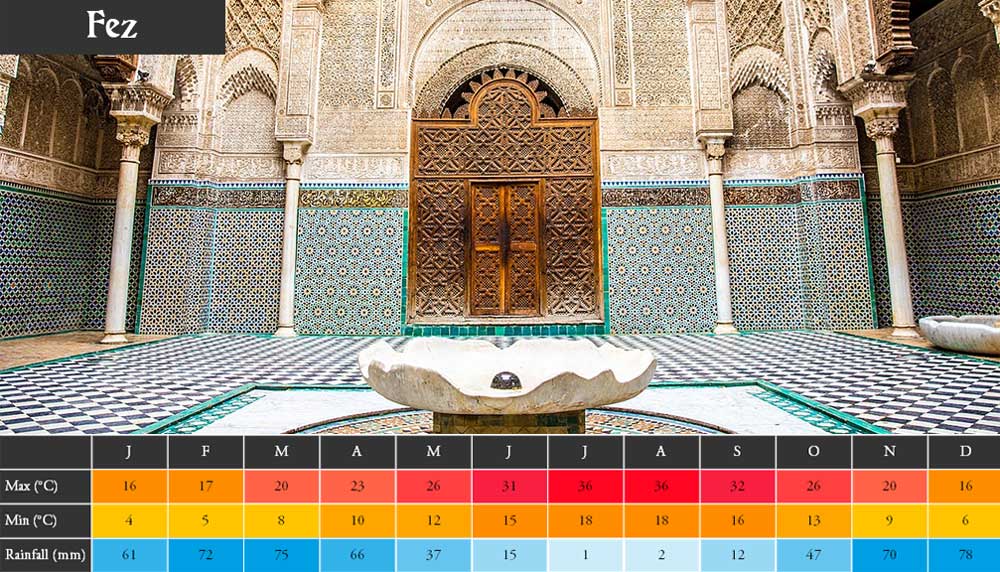
The weather in Agadir, Essaouira and on the Atlantic coast
The north-western part of the country and the long Atlantic coastal region experience long hot summers with hardly any rain. Temperatures average between 24-26° C and don’t fall much below 17°C at night. This means it’s the ideal Moroccan beach holiday weather. In winter, it gets a bit cooler and temperatures fall to around 16°C on average. It also rains more during this time.
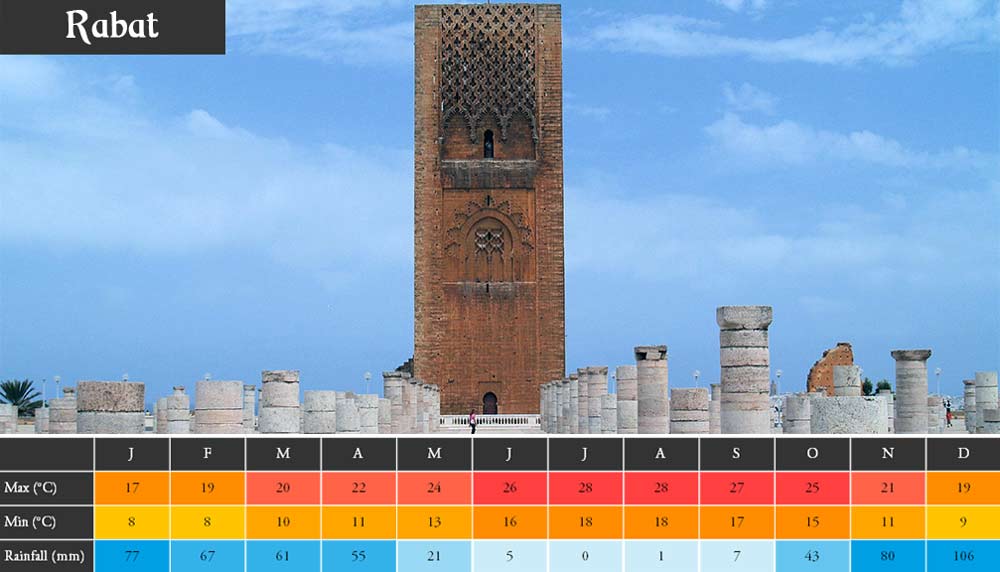
The weather along the Moroccan coast changes the further south you go. In Essaouira , temperatures are similar to those in Rabat, with considerably less rain. This picturesque port city has its own special microclimate. With a breeze blowing every day, Essaouira is nicknamed the “Windy City”. Needless to say, it’s a good idea to pack a windproof or softshell jacket when visiting.
Despite the wind, the weather in Essaouira is pleasant and generally stable. Summers tend not to be unbearably hot and winters are milder than those further inland. Thanks to this well-balanced weather, Essaouira is the ideal place for a relaxing holiday at any time of the year; It’s also a good place to go with children.
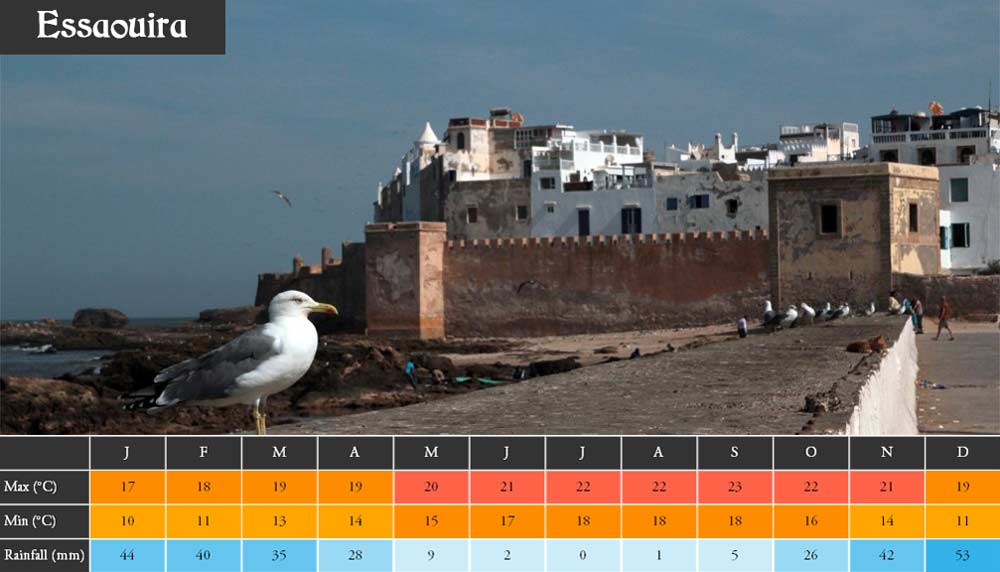
South of Essaouira along Morocco’s Atlantic coast, the weather is mild and fairly predictable all year-round. Temperature differences between day and night are more pronounced in winter than in summer, but not as much so as for the continental climate in the middle of the country. By night, temperatures never fall below 7°C, while usually still over 20°C by day, even in winter.
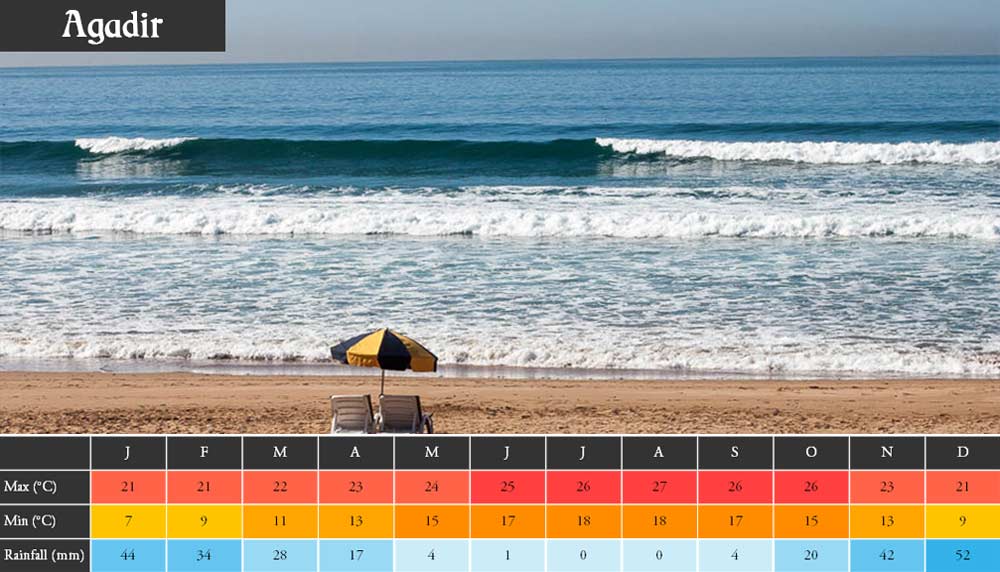
The Moroccan weather inland
You’ll experience more continental weather conditions the further away from the coast you go and the nearer to the Atlas Mountains you are. Proximity to the Atlantic has a balancing influence on the weather. This is particularly noticeable in the marked temperature differences between day and night further inland. Depending on the altitude, temperatures can soar to over 40°C during the hottest summer months and fall below 0°C by night during the winter. Since the Atlas Mountains act as a climate barrier, there’s hardly any rainfall east of this mountain range.
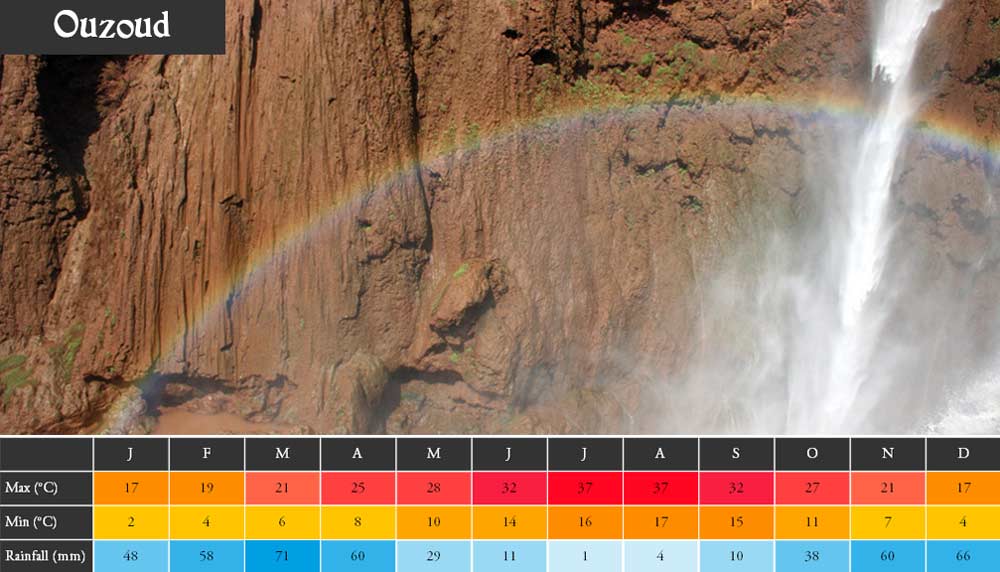
The best weather for travelling will mainly depend on the specific region you want to visit. If you travel in winter, go prepared and take a sleeping bag. Another tip is to select heated hotels for your accommodation. If you’re planning day trips, destinations like the Ouzoud Falls are popular and appealing all year round.
The weather in Marrakech
Marrakesh is situated on a high plateau and enjoys a continental climate. From November to April, daytime temperatures range between 18-23°C. In summer, however, the thermometer often climbs to over 35°C and humidity is low. It gets noticeably cooler in the evenings.
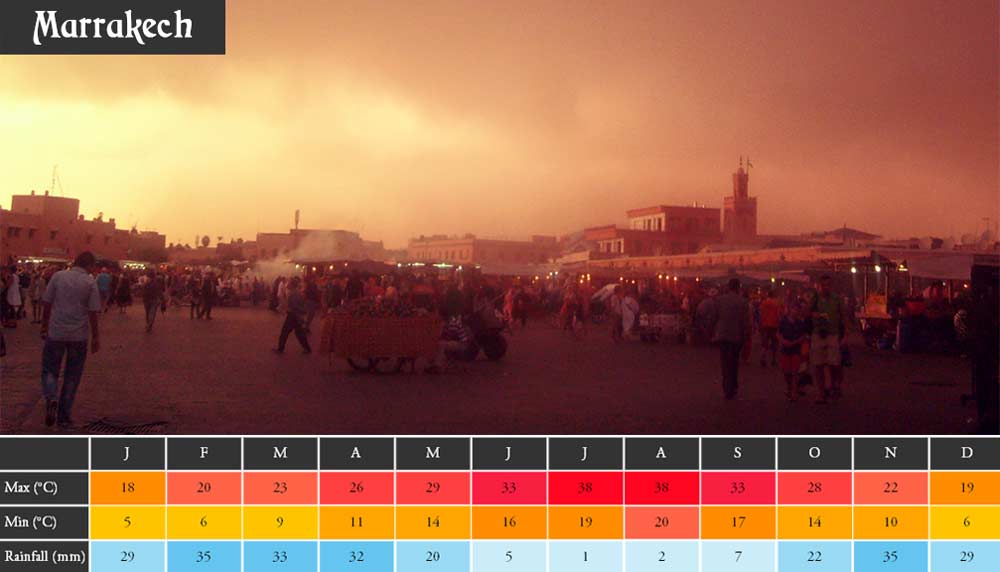
When is the best time to go to Marrakech ? The best time for nice weather is May. At this time of year, you’ll enjoy very warm evenings without suffering the summer heat. In any case, the weather in Marrakech is always warmer than in Central Europe. This means it can be a better place to spend January than if you were at home. Just outside of the summer months, it’s a good idea to carry a light jacket or thin jumper. In winter, you’ll need thick jumpers and warm socks. Another good tip is to carry a rain jacket outside of the summer season.
Choosing the right accommodation is also very important: Not all hotels in Marrakech benefit from heating. If you’re planning a trip in December or January and feel the cold, check whether the hotel you’re booking is heated. Choosing your accommodation carefully is very important in high summer. It’s easier to tolerate the hot temperatures if you cut back on your daily routine and take a longer lunch break. It’s a really good idea to stay in a raid with a shady courtyard and a nice roof terrace to spend the hottest hours of the day. Don’t forget there’s a good selection of recommended places to stay in our Marrakech Riad Guide .
The weather in the High Altas
If visibility is good, you’ll see the snow-capped peaks of the Atlas Mountains from Marrakech. Travelling there takes a good hour by car or taxi. Imlil is the Moroccan centre for hiking and mountain sports. There are plenty of trekking tours and day hikes that start out from Imil. It’s also the place to begin an ascent of the Djebel Toubkal (4167m), the highest mountain in North Africa.
The weather here is similar to conditions inland, with hot summers and temperatures that fall below freezing in winter. It’s more common for rain to fall as snow. At higher altitudes, daytime temperatures drop and the weather feels a bit like in the Alps. Some of the four-thousand-metre mountains are still covered in snow right up to the summer.
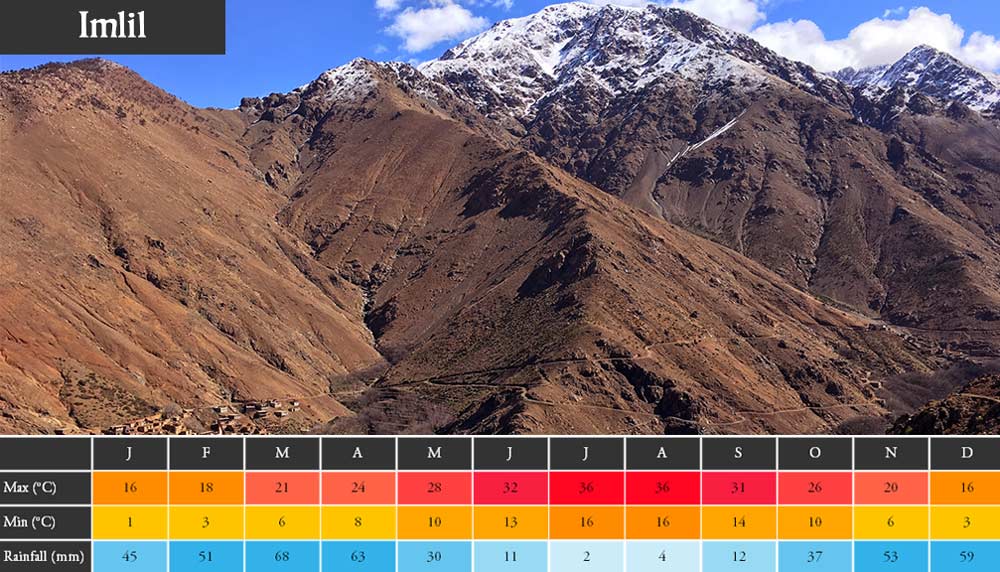
Thanks to lower temperatures, the Atlas Mountains provide a refreshing contrast to the summer heat. For easy hikes, the weather is best between March and November. You should only go to Toubkal without your winter gear between May and September. However, even in winter, the Atlas Mountains are a worthwhile destination. If you go on a trekking tour in the Imlil region during these months, you’ll rarely ascend above 2000 meters and tours are all tailored to suit the weather conditions. A private day tour through the many valleys of the High Atlas Mountains can be really lovely, even in winter. The spectacular panoramic views will take your breath away.
The weather in the south and in the desert
The most popular sandy desert areas in Morocco are on the edge of the Sahara, south or south-east of the High Atlas. This is where the desert climate reigns supreme, with typically hot and extremely dry weather. The Sirocco, a hot desert wind, tends to blow during the summer, covering the vast and beautiful landscape with sandstorms.
A trip to the Sahara is a real highlight of any trip to Morocco. If you intend to visit this region, you’ll need to think hard about whether this part of Morocco, the climate, travel time and planned activities are what you’re looking for.
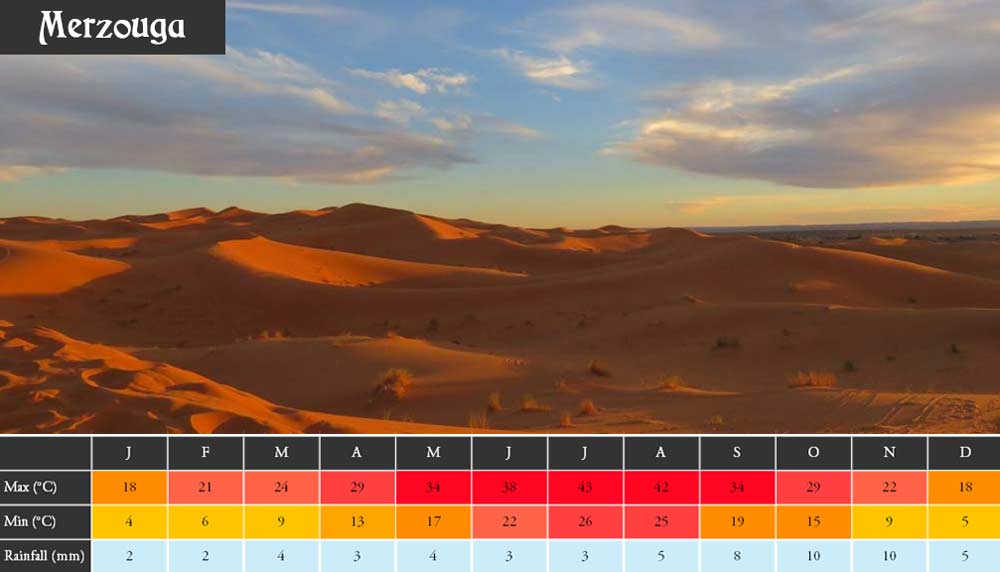
Between December and February, it gets surprisingly cold in the desert at night. When temperatures fall to 4°C and you’re spending a night in a desert bivouac, sleeping bags, hats and gloves are really worth their weight in gold! In spring and autumn, the weather in the Moroccan Sahara is more balanced. In contrast, it gets extremely hot during the summer months of July and August. These are definitely the months to avoid if you enjoy fast-paced desert hikes.
In my experience, it’s worse travelling from Marrakech to Merzouga by car in the heat of the day than spending a few hours out in the high temperatures of the desert. The hot weather you’ll experience in southern Morocco is more tolerable due to the relatively low humidity.
What to consider in terms of the Moroccan weather when planning your holiday
So, how do you make the most of all this information when planning a trip to Morocco? Although it’s a good idea to take this information on board, you certainly don’t need to become a slave to the weather. Outdoor activities are naturally more prone to bad weather than a museum visit in the medina. Sometimes, you’ll need to plan to travel outside of the typical holiday season to take part in certain activities. For example, while recreational hikers without any alpine experience might only want to climb Djebel Toubkal in the summer, other mountain enthusiasts may go there to ski in March. Everyone has their individual needs and expectations. As these can differ so greatly, it’s impossible to make specific recommendations about when and where to find the ideal weather in Morocco without knowing individual preferences, abilities and plans.
Three facts about the “Moroccan weather”:
- The weather in Morocco is always warmer than in Europe.
- In April, May and October, you can’t really go wrong as the weather is at its best in all regions of Morocco.
- Dry heat in Morocco is more bearable than you might expect. 42°C in Merzouga is better than 30°C in humid Berlin.
Weather data: www.yr.no , Photos are all from Riads Marrakech except Chefachaouen ( محمد بوعلام عصامي ), Fes (Alina Chan), Rabat (Quentin Drèze), Agadir ( Hash Pay )
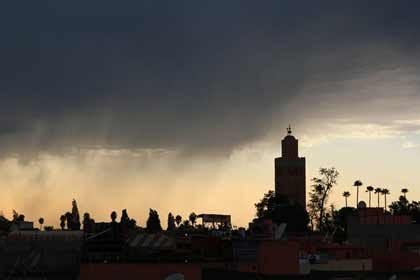
The ideal time for travelling to Marrakech
One comment.
Great blog post! Morocco seems interesting all along the year!
Leave a Reply Cancel reply
Your email address will not be published. Required fields are marked *
The Best Time to Visit Morocco for Weather, Safety, & Tourism
The best times to visit Morocco for ideal weather are
February 26th to June 24th
September 17th to november 25th.
based on average temperature and humidity from NOAA (the National Oceanic and Atmospheric Administration). Read below for more weather and travel details.
Morocco Travel Guide
Temperature.
- Perceived Temperature
- Rain and snow
- Humidity and wind
- The busiest and least popular months
- Overall travel experience by time of year
Other Morocco Travel Info
Weather in morocco.
Average temperatures in Morocco vary greatly. Considering humidity, temperatures feel nice most of the year, excluding some cold weeks in the winter, with a very low chance of rain or snow throughout the year. The area is more temperate than most — in the 61st percentile for pleasant weather — compared to tourist destinations worldwide. Weeks with ideal weather are listed above . If you’re looking for the very warmest time to visit Morocco, the hottest months are July, August, and then June. See average monthly temperatures below. The warmest time of year is generally early to mid August where highs are regularly around 92.4°F (33.6°C) with temperatures rarely dropping below 69.4°F (20.8°C) at night.
Morocco Temperatures (Fahrenheit)
Morocco temperatures (celsius), “feels-like” temperatures.
The way we experience weather isn’t all about temperature. Higher temperatures affect us much more at higher humidity, and colder temperatures feel piercing with high winds. Our perceived temperatures factor in humidity and wind chill to better represent how hot or cold the day feels to a person.

Morocco Perceived Temperature (F)
Morocco perceived temperature (c), average morocco temperatures by month.
Daily highs (averaged for the month) usually give the best indication of the weather. A significantly lower mean and low generally just means it gets colder at night.
Show Fahrenheit
Show celsius, precipitation (rain or snow).
If dry weather is what you’re after, the months with the lowest chance of significant precipitation in Morocco are July, August, and then June. Note that we define “significant precipitation” as .1 inches or more in this section. The lowest chance of rain or snow occurs around early August. For example, on the week of July 30th there are no days of precipitation on average. By contrast, it’s most likely to rain or snow in late November to early December with an average of 2 days of significant precipitation the week of November 26th.
Chance of Precipitation
The graph below shows the % chance of rainy and snowy days in Morocco.
Snow on the Ground
The graph below shows the average snow on the ground in Morocco (in).
Average Rain and Snow by Month
Show inches, show centimeters, humidity and wind.
Morocco has some comfortably humid months, with slightly drier months on the other side of the year. The least humid month is July (45.7% relative humidity), and the most humid month is February (59.9%).
Wind in Morocco is usually calm . The windiest month is May, followed by April and June. May’s average wind speed of around 7.2 knots (8.3 MPH or 13.3 KPH) is considered “a gentle breeze.” Maximum sustained winds (the highest speed for the day lasting more than a few moments) are at their highest in mid May where average top sustained speeds reach 13.5 knots, which is considered a moderate breeze.
Relative Humidity (%)
The graph below shows the average % humidity by month in Morocco.
The graph below shows wind speed (max and average) in knots.
Average Wind Speeds
Show wind speeds.
All wind speeds are in knots. 1 knot = 1.15 MPH or 1.85 KPH.
Show Relative Humidity by Month
Is it safe to travel to morocco.
Our best data indicates this area is somewhat safe, but with extra warnings in a few regions. As of Dec 04, 2023 there are travel warnings and regional advisories for Morocco; exercise a high degree of caution and avoid some areas. Check this page for any recent changes or regions to avoid: Travel Advice and Advisories . This advisory was last updated on Nov 06, 2023.
The Busiest and Least Crowded Months
The busiest month for tourism in Morocco is January, followed by February and May. Prices for hotels and flights will be most expensive during these months, though you can save if you purchase well in advance. Tourists are unlikely to visit Morocco in December. Those willing to visit at these times will likely find it the least expensive month.
Estimated Tourism by Month
Most popular months to visit, overall morocco travel experience by season, spring (march through may).
Humidity and temperatures combine to make this season feel moderate. Highs range from 82.4°F (28°C) and 67.6°F (19.8°C) with warmer temperatures in the later months. Rain is rare with 2 to 3 days of significant precipitation per month. Spring is the busiest for tourism, which makes it a good time for those looking for things to do.
Summer (June through August)
The middle-year months have very comfortable weather with high temperatures that are quite warm. These months see the least precipitation with about 0 days of precipitation per month. June – August is fairly slow season for tourism in Morocco, so lodging and other accommodations may cost slightly less.
Fall (September through November)
Fall daily highs range from 85.4°F (29.7°C) and 64.6°F (18.1°C), which will feel very nice given the humidity and wind. It rains or snows a normal amount: 2 to 5 days per month. Tourism is the slowest during these months due to the weather, so hotels may be affordably priced.
Winter (December through February)
Weather is too cold this time of year in Morocco to be enjoyable for warm weather travelers. The average high during this season is between 67.6°F (19.8°C) and 62.2°F (16.8°C). On average, it rains or snows a smalll amount: 3 to 4 times per month. These times of year are the second busiest with tourists.
Best Times to Travel › Morocco
Similar Destinations
- Tinghir, Morocco
- South Eastern Morocco, Morocco
- Boumalne Dades, Morocco
- Meknes-Tafilalet, Morocco
- Nekob, Morocco
- Kelaat MGouna, Morocco
- Rissani, Morocco
- Errachidia, Morocco
- Erfoud, Morocco
- Aoufous, Morocco
Popular Destinations
- Lisbon, Portugal
- Calpe, Spain
- Takua Pa, Thailand

Morocco Climate: A Comprehensive Guide to Weather Patterns and Seasons

Affiliate Disclaimer
As an affiliate, we may earn a commission from qualifying purchases. We get commissions for purchases made through links on this website from Amazon and other third parties.
Morocco’s climate is diverse and varied, with different regions experiencing different weather patterns. The country’s location in North Africa means that it is influenced by both the Mediterranean Sea and the Atlantic Ocean. The northern coast of Morocco has a typical Mediterranean climate, with mild winters and hot summers. The rainy season in this region generally extends from October to April.
Inland areas of Morocco are more arid and experience a desert climate. The Sahara Desert covers much of the southeastern part of the country, and temperatures can reach up to 50°C during the summer months. The Atlas Mountains, which run through the center of Morocco, also have their own unique climate. As altitude increases, the climate becomes colder and more continental. The mountains receive snowfall during the winter months, making them a popular destination for winter sports enthusiasts.
Geography of Morocco
Morocco is a country located in the northwest corner of Africa. It is bordered by the North Atlantic Ocean and the Mediterranean Sea. Algeria and Western Sahara are the land borders to the south and east. The geography of Morocco is diverse and can be divided into two parts: the north and the south.
The north of Morocco has a mild climate, and 95% of the Moroccan population lives in this region. The Rif Mountains run parallel to the Mediterranean coast and are home to several cities, including Tangier and Tetouan. The Rif Mountains are characterized by their rugged terrain, deep gorges, and forests. The Middle Atlas Mountains are located south of the Rif Mountains and are known for their cedar forests, lakes, and waterfalls.
The northern region of Morocco is also home to fertile plains, including the Sebou River basin and the Gharb plain. These areas are known for their agriculture, including the cultivation of wheat, citrus fruits, olives, and grapes.
The south of Morocco is characterized by its arid climate and vast desert landscapes. The Sahara Desert covers much of the southern region of Morocco and is home to several nomadic tribes. The desert is also home to several oases, including the Draa Valley, which is known for its date palms and kasbahs.
The High Atlas Mountains run through the southern region of Morocco and are home to several peaks over 4,000 meters in height, including Mount Toubkal, the highest peak in North Africa. The mountains are also home to several Berber villages and are a popular destination for hikers and trekkers.
Morocco has a long coastline that stretches along the Atlantic Ocean and the Mediterranean Sea. The Atlantic coastline is known for its rugged cliffs, sandy beaches, and fishing villages. The Mediterranean coastline is characterized by its rocky coves and sandy beaches.
The climate of Morocco varies with location. Along the coast, it is Mediterranean with warm, dry summers and mild winters. Farther inland, the climate is more extreme, and the closer one gets to the Sahara Desert, the hotter and more extreme it gets.
Seasonal Overview
Morocco’s climate is diverse due to its location in North Africa, the Atlantic Ocean, and the Mediterranean Sea. The country experiences four distinct seasons: winter, spring, summer, and fall. Each season has its own unique characteristics and weather patterns.
Winter in Morocco lasts from December to February. It is the wettest season in the country, with the northern and coastal regions receiving the most rainfall. Temperatures can drop to around 5°C (41°F) in the mountains, while the coastal areas are milder with temperatures ranging from 10-20°C (50-68°F). Snowfall is common in the Atlas Mountains and the Rif Mountains during this season.
Spring in Morocco begins in March and lasts until May. The weather during this season is pleasant, with mild temperatures and less rainfall. The countryside is lush and green, making it an ideal time for outdoor activities such as hiking and exploring the countryside. Temperatures range from 15-25°C (59-77°F) in the coastal regions and 5-20°C (41-68°F) in the mountains.
Summer in Morocco lasts from June to August and is the hottest season in the country. Temperatures can reach up to 40°C (104°F) in the interior regions, while the coastal areas are cooler with temperatures ranging from 20-30°C (68-86°F). It is a popular time for beach holidays and water sports, but visitors should be prepared for the heat.
Fall in Morocco begins in September and lasts until November. The weather during this season is similar to spring, with mild temperatures and less rainfall. The countryside is still green, making it an ideal time for outdoor activities. Temperatures range from 15-25°C (59-77°F) in the coastal regions and 5-20°C (41-68°F) in the mountains.
Overall, Morocco has a Mediterranean climate on the northern and eastern coasts, a semi-arid climate on the Atlantic coast, and a desert climate in the inland areas. Visitors should be aware of the weather patterns during their visit and pack accordingly.
Temperature Ranges
Morocco’s climate is influenced by its location in the northern hemisphere and the proximity of the Sahara desert. The temperature ranges in Morocco vary depending on the region and the season.
In general, the coastal areas have a Mediterranean climate with mild winters and warm summers. The average temperature ranges from 13 °C (55.5 °F) in January to 24 °C (75 °F) in August in Casablanca. The sea temperature is also not warm, reaching 23.5 °C (74.5 °F) in August.
Inland areas have a more continental climate, with hot summers and cold winters. The Atlas Mountains have a subarctic climate, with snow and frost in the winter. Away from the coast, temperatures can drop significantly, occasionally dipping below the freezing point.
During the summer months, Morocco can be scorching, with temperatures reaching up to 40 °C (104 °F) in the desert regions. It is important to stay hydrated and seek shade during the hottest parts of the day.
In the winter, temperatures can be cold, especially in the mountains. The average daily winter temperatures range from 8 to 17 °C (46 to 63 °F) depending on the region. It is important to pack warm clothing if visiting Morocco during the winter months.
Overall, Morocco’s temperature ranges are diverse and can vary significantly depending on the region and the season. It is important to check the weather forecast and pack accordingly when planning a trip to Morocco.
Rainfall Patterns
Morocco’s climate is influenced by its location on the northwest coast of Africa, the Atlas Mountains, and the Sahara desert. The country experiences a variety of climates, ranging from Mediterranean to semi-arid and arid. Rainfall patterns in Morocco vary depending on the region, with the northern and coastal areas receiving more precipitation than the southern and inland regions.
The rainy season in Morocco typically lasts from November to April, with the heaviest rainfall occurring in the months of December and January. The amount of rainfall received during this period is crucial for agriculture, which is a significant contributor to the country’s economy.
According to Encyclopedia Britannica , the average annual precipitation in the broad coastal lowlands ranges from about 32 inches (800 mm) on the northern Gharb plain to less than 8 inches (200 mm) in the Sous valley. Farther south, beyond the Anti-Atlas, semiarid conditions quickly fade into the desert. In Casablanca, the average rainfall is about 400 mm (16 in) per year, with the rains concentrated from November to April.
It is worth noting that rainfall patterns in Morocco are highly variable, and the country has experienced droughts in the past. The 2020 Annual Climate Report for Morocco states that total annual precipitation in 2020 was below normal across Morocco, with less than 50% of average in some regions and almost no rainfall in the southern provinces. This year was among the four driest years since 1981.
Month-By-Month Guide
Morocco has a diverse climate due to its location in North Africa, with the Atlantic Ocean and Mediterranean Sea influencing its weather patterns. In general, the best time to visit Morocco is during the shoulder seasons of spring (March to May) and fall (September to November) when the weather is mild and pleasant.
Here is a month-by-month guide to the average temperatures and weather conditions in Morocco:
- January: January is the coldest month in Morocco, with average temperatures ranging from 8°C (46°F) in the north to 18°C (64°F) in the south. It can be rainy and chilly, especially in the mountains.
- February: February is similar to January, with temperatures ranging from 9°C (48°F) in the north to 20°C (68°F) in the south. It can still be rainy and cold, but the days are starting to get longer.
- March: March is a great time to visit Morocco, with temperatures ranging from 11°C (52°F) in the north to 22°C (72°F) in the south. It’s sunny and warm during the day, but can still be chilly at night.
- April: April is one of the best times to visit Morocco, with temperatures ranging from 13°C (55°F) in the north to 24°C (75°F) in the south. It’s sunny and warm, but can be windy at times.
- May: May is another great time to visit Morocco, with temperatures ranging from 16°C (61°F) in the north to 27°C (81°F) in the south. It’s warm and sunny, but can start to get hot in the south.
- June: June is one of the hotter months in Morocco, with temperatures ranging from 19°C (66°F) in the north to 30°C (86°F) in the south. It can be hot and dry, especially in the desert.
- July: July is the hottest month in Morocco, with temperatures ranging from 22°C (72°F) in the north to 34°C (93°F) in the south. It’s hot and dry, but the coastal cities like Essaouira and Tangier stay relatively cool.
- August: August is similar to July, with temperatures ranging from 22°C (72°F) in the north to 34°C (93°F) in the south. It’s hot and dry, but the coastal cities are still relatively cool.
- September: September is a great time to visit Morocco, with temperatures ranging from 19°C (66°F) in the north to 31°C (88°F) in the south. It’s sunny and warm, but not too hot.
- October: October is another great time to visit Morocco, with temperatures ranging from 16°C (61°F) in the north to 27°C (81°F) in the south. It’s sunny and warm, but can start to get cooler at night.
- November: November is a good time to visit Morocco, with temperatures ranging from 12°C (54°F) in the north to 22°C (72°F) in the south. It can be rainy and chilly, especially in the mountains.
- December: December is similar to November, with temperatures ranging from 9°C (48°F) in the north to 19°C (66°F) in the south. It can be rainy and chilly, but the days are starting to get longer.
Regional Climate Variations
Morocco’s climate varies widely depending on the region due to its diverse geography. The country has a Mediterranean climate in the north, a continental climate in the northeast, a desert climate in the south and southeast, and an oceanic climate in the west.
Inland regions of Morocco, particularly the Sahara desert, experience extremely high temperatures during the day and cold temperatures at night. The temperature can reach up to 50°C (122°F) during the day and drop below freezing at night. The region receives very little rainfall, and the air is dry.
The coastal regions of Morocco have a Mediterranean climate, with mild, wet winters and hot, dry summers. The Atlantic coast has a cooler climate than the Mediterranean coast. The coastal regions receive more rainfall than inland regions, with the northern coast receiving the most rainfall.
Morocco’s mountainous regions, including the Atlas Mountains, have a continental climate, with cold, snowy winters and mild summers. The higher elevations receive more precipitation than lower elevations, and the region experiences a significant temperature drop at night.
Atlantic Coast
The Atlantic coast of Morocco has a cooler climate than the Mediterranean coast, with mild winters and cool summers. The region receives moderate rainfall throughout the year, with the wettest months being November and December.
Sahara Desert
The Sahara desert in Morocco has a hot and dry climate, with extreme temperatures during the day and night. The region receives very little rainfall, and the air is dry.
Climate and Travel
Morocco has a diverse climate due to its location in North Africa, with the Mediterranean Sea to the north and the Atlantic Ocean to the west. The climate in Morocco varies depending on the region, with the northern and coastal areas being more temperate, while the interior regions are more arid and desert-like.
The best time to visit Morocco is during the spring and fall months, from March to May and September to November, respectively. During these months, the weather is mild, and there are fewer tourists than in the summer months. However, if you’re looking for a beach vacation, the summer months of June to August are the most popular, with temperatures averaging around 80°F (27°C) on the coast.
If you’re planning to visit the desert areas of Morocco, the best time to go is during the winter months of December to February when the temperatures are cooler and more comfortable for outdoor activities. However, keep in mind that the nights can be chilly, so be sure to bring warm clothing.
When traveling to Morocco, it’s essential to pack for the climate and activities you plan to do. Lightweight, breathable clothing is best for the warmer months, while warm layers are necessary for the cooler months. It’s also a good idea to bring sunscreen, a hat, and sunglasses, as the sun can be intense, especially in the desert areas.
Climate and Clothing
Morocco has a diverse climate due to its varied topography. The coastal areas have a Mediterranean climate, while the inland regions have a more arid and desert-like climate. The High Atlas Mountains have a cooler climate, and snowfall is common in the winter months.
When it comes to clothing, it’s important to consider the climate of the region you’ll be visiting. In coastal areas such as Tangier and Casablanca, the weather is mild in the winter months, so a light jacket or sweater is sufficient. However, summers can be hot and humid, so lightweight and breathable clothing is recommended. A hat and sunglasses are also essential to protect against the strong sun.
In the interior regions such as Marrakech and Fez, the climate is more extreme, with hot summers and cold winters. It’s important to pack accordingly, with warm clothing for the winter months and lightweight clothing for the summer. A jacket or coat is recommended for the winter months, especially for the cooler evenings.
If you plan to visit the High Atlas Mountains, it’s essential to pack warm clothing, including a heavy jacket, hat, and gloves. The temperatures can drop below freezing, especially at night, so it’s important to be prepared.
While rain is not common in Morocco, it’s always a good idea to pack an umbrella or rain jacket, especially if you plan to visit during the winter months.
Major Cities and Their Climates
Morocco is home to a variety of cities, each with its own unique climate. Here’s a brief overview of some of the major cities and what to expect weather-wise:
Casablanca , located on the Atlantic coast, has a Mediterranean climate with hot, dry summers and mild, rainy winters. July and August are the hottest months, with average high temperatures of 27°C (81°F). January is the coolest month, with average high temperatures of 17°C (63°F). The city receives an average of 450 mm (18 in) of rainfall per year, with the majority falling between November and March.
Tangier , also located on the Atlantic coast, has a similar climate to Casablanca, with hot, dry summers and mild, rainy winters. July and August are the hottest months, with average high temperatures of 27°C (81°F). January is the coolest month, with average high temperatures of 16°C (61°F). The city receives an average of 650 mm (26 in) of rainfall per year, with the majority falling between November and March.
Essaouira, located on the Atlantic coast, has a mild, subtropical climate with cool, damp winters and warm, dry summers. July and August are the hottest months, with average high temperatures of 25°C (77°F). January is the coolest month, with average high temperatures of 18°C (64°F). The city receives an average of 500 mm (20 in) of rainfall per year, with the majority falling between October and April.
Marrakesh , located in the interior of the country, has a hot, semi-arid climate with very little rainfall. Summers are extremely hot, with average high temperatures of 38°C (100°F) in July and August. Winters are mild, with average high temperatures of 19°C (66°F) in January. The city receives an average of 250 mm (10 in) of rainfall per year, with the majority falling between November and April.
Rabat , located on the Atlantic coast, has a Mediterranean climate with hot, dry summers and mild, rainy winters. July and August are the hottest months, with average high temperatures of 28°C (82°F). January is the coolest month, with average high temperatures of 17°C (63°F). The city receives an average of 650 mm (26 in) of rainfall per year, with the majority falling between November and March.
Fez , located in the interior of the country, has a hot, semi-arid climate with very little rainfall. Summers are extremely hot, with average high temperatures of 38°C (100°F) in July and August. Winters are mild, with average high temperatures of 18°C (64°F) in January. The city receives an average of 350 mm (14 in) of rainfall per year, with the majority falling between November and April.
Agadir, located on the Atlantic coast, has a warm, dry climate with very little rainfall. Summers are hot, with average high temperatures of 28°C (82°F) in July and August. Winters are mild, with average high temperatures of 21°C (70°F) in January. The city receives an average of 250 mm (10 in) of rainfall per year, with the majority falling between November and March.
Ifrane, located in the Atlas Mountains, has a cool, continental climate with cold, snowy winters and mild summers. January is the coldest month, with average high temperatures of 8°C (46°F). July and August are the warmest months, with average high temperatures of 27°C (81°F). The city receives an average of 800 mm (31 in) of rainfall per year, with the majority falling between October and April.
Overall, Morocco’s climate is diverse and varied, with something for everyone depending on the time of year and location. Whether you’re looking for hot, dry summers or mild, rainy winters, there’s a city in Morocco that’s perfect for you.
Unique Weather Phenomena
Morocco has a diverse climate with unique weather phenomena that make it an interesting destination for travelers. From hot and dry summers to cool and wet winters, Morocco’s climate is influenced by its location, topography, and proximity to the Atlantic Ocean and the Sahara Desert.
Snow in the Atlas Mountains
The Atlas Mountains, located in central Morocco, experience snowfall during the winter months. The snow-capped peaks provide a beautiful contrast to the green valleys and are a popular destination for winter sports enthusiasts. Ski resorts like Oukaimeden and Michlifen offer skiing and snowboarding opportunities for locals and tourists alike.
Hot and Sunny Summers
Morocco’s coastal cities experience hot and sunny summers with average daily temperatures ranging from 64 to 82 °F (18 to 28 °C). However, the interior regions can be much hotter, with daily highs frequently exceeding 95 °F (35 °C). The sharqī ( chergui ) — a hot, dusty wind from the Sahara — can sweep over the mountains into the lowlands, even penetrating the coastal cities, making the summer heat even more intense.
Winter Nights
Winter nights in Morocco can get quite cold, especially in the desert regions. Temperatures can drop below freezing, and travelers should be prepared with warm clothing and blankets. However, the coastal regions have mild winters, with temperatures rarely dropping below 50 °F (10 °C).
Wetlands and Wildlife
Morocco’s wetlands, including the Ramsar Wetlands of International Importance, are home to a variety of migratory birds during the winter months. The wetlands provide a unique habitat for waterfowl, shorebirds, and other wildlife. Morocco’s unique climate and topography also support a diverse range of flora and fauna, making it an ideal destination for nature lovers.
Frequently Asked Questions
What is the average temperature in morocco.
Morocco has a Mediterranean climate with hot summers and mild winters. The average temperature in Morocco varies depending on the region and time of year. Coastal cities have an average temperature of 64 to 82 °F (18 to 28 °C) during the summer, while the interior can have daily highs exceeding 95 °F (35 °C). In general, temperatures in Morocco are cooler in the north and higher in the south.
What is the average rainfall in Morocco?
Morocco has a varied climate with different levels of rainfall depending on the region. Coastal areas receive around 20 inches (50 cm) of rainfall annually, while the interior can receive as little as 8 inches (20 cm) of rainfall per year. The rainy season in Morocco is from November to March, with the heaviest rainfall occurring in the northern and central regions.
What is the climate like in Morocco?
Morocco has a diverse climate due to its varied terrain and location. The coastal regions have a Mediterranean climate with mild, wet winters and hot, dry summers. The interior has a continental climate with hot summers and cold winters. The southern regions have a desert climate with extremely high temperatures during the day and cold nights.
How does Morocco’s terrain affect its climate?
Morocco’s terrain has a significant impact on its climate. The Atlas Mountains, which run through the center of the country, act as a barrier to the humid Atlantic air, creating a dry climate in the east. The mountains also create a rain shadow effect, causing the eastern regions to be drier than the west. The coastal regions are influenced by the Atlantic Ocean, which moderates the temperature and brings moisture.
What is the best time of year to visit Morocco in terms of weather?
The best time to visit Morocco in terms of weather depends on the region and the activities you plan to do. The coastal regions are pleasant year-round, while the interior can be extremely hot during the summer months. The best time to visit the Sahara Desert is from October to April when the temperatures are cooler. The best time to visit the Atlas Mountains is from May to September when the weather is mild and dry.
What are some notable vegetation types in Morocco?
Morocco has a diverse range of vegetation types due to its varied climate and terrain. The coastal regions have Mediterranean vegetation, including olive trees, cork oaks, and citrus trees. The Atlas Mountains have alpine vegetation, including juniper and cedar forests. The southern regions have desert vegetation, including acacia trees and cacti.
About the author
Latest posts

History of Tangiers: The Crossroads of Civilizations
Delve into Tangier’s tapestry of time, where ancient tales meet modern narratives.

Day Trip Tangier: Exploring Morocco’s Northern Gem in One Day
Imagine a city where the rhythmic beats of Africa meet the melodic tunes of Europe, where the Atlantic kisses the Mediterranean, and where history and modernity walk hand in hand. Welcome to Tangier.

Best Places to Stay in Tangier: A Comprehensive Guide
From historic riads to luxurious resorts, Tangier’s accommodations are as diverse and enchanting as the city itself.

Best Time to Visit Morocco
Climate Overview

Geographical location
Climate and weather in morocco.
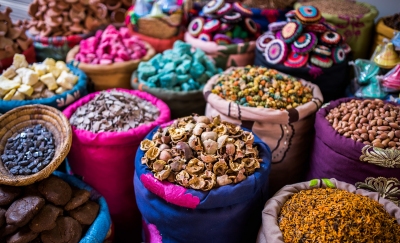
Beach Vacation in February

Best Time to Visit Morocco: Overview
When to go to morocco, best time to visit the regions, climate charts morocco.
In the following, you will find climate charts for the regions.
Furthermore, there are some charts you can use for quick comparison of climate between the regions.
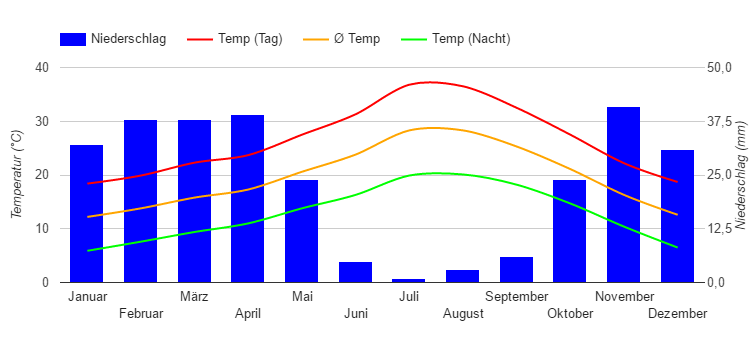
Day Temperatures
Night temperatures, average temperatures, water temperatures, precipitation, hours of sunshine per day.
Source of Data: German Weather Service (Offenbach) and Wikipedia
Climate Tables Morocco
Temperatures, precipitation, sunshine in marrakesh (morocco), temperatures, precipitation, sunshine in casablanca (morocco), temperatures, precipitation, sunshine in tangier (morocco), temperatures, precipitation, sunshine in agadir (morocco), sights and highlights, popular activities, more attractions, current weather and forecast.
Important Regions and Cities

Activities and Attractions
Distances to morocco, where’s morocco, continent: africa, morocco: experiences of our visitors.

Pleasant during the day – 16 /18 degrees, at night slightly cool at approx. 8° C. Good for excursions, 2 day trip through the desert e recommended. Night flair still not very cult, but pleasant for us older people.
Weather Rating: 4 stars – Good

The temperatures were very pleasant, in the highlands somewhat cooler, snow still lay occasionally, but in Fès and the other royal cities it was warm.

There was a lot of sun, only sometimes some clouds. It was warm, but not too hot (rarely over 30 degrees). In the south and towards the Sahara a little warmer, of course.
Weather Rating: 5 stars – Excellent

Great sunshine, but very cool nights. Ideal for an active trip :-).

from 10 a.m. to 4 p.m. mostly sunshine and about 18 degrees warm.

very hot fortunately in the evening windy at the Atlantic otherwise no recovery possible with the permanent heat for bathing vacation super but otherwise too hot.
Share your Experience and Win
1001 Nights: Holidays in Morocco
Destinations in the vicinity ….
- Imprint / Privacy
- Image Sources
Weather in Morocco
-2560.jpg?width=75&quality=35&blur=1&format=pjpg&auto=webp)
Much of Morocco 's weather is typical of a four-season climate – super hot in the summer without much rain, winter turning wet, snowy and humid with milder conditions, and the shoulder seasons of autumn and spring acting as usual, with warm to mild temperatures.
A common misconception about Morocco is that the country is just a desert and is always hot. Yes, the Sahara makes up a large chunk of inland Morocco and many places swelter in summer, but the climate changes depending on where you are in the country and the time of year you visit.
Northern coastlines, like in Tangier, follow more of a Mediterranean climate pattern, with warm summers and cool winters but not too much extremity on either side. Cities and towns along the coast usually experience milder temperatures throughout the year, not reaching much higher than 86°F on a hot day.
In desert areas and arid zones, temperatures can soar to well above 104°F. Mountainous areas, such as Mt Toubkal in the High Atlas , follow similar patterns, but evenings can offer quite cool conditions and there's plenty of snowfall in winter, so don't let the harsh sun-kissed landscapes fool you.
One of the northernmost points of Morocco, Tangier follows a more Mediterranean climate of relatively hot summers, wet and mild winters and coastal winds blowing inland to offset the heat at many times of the year. It has heavier rainfall than most parts of northern Africa, but virtually no rain in July or August.
Further down the coast, Casablanca has more of an oceanic sub-mediterranean climate and – surprisingly – similar weather patterns to Los Angeles! Casablanca is in the path of the cool Atlantic Canary Current, which moderates temperatures during the year.
The Atlas Mountains cover a large section of northwestern Africa, through Morocco, Algeria and Tunisia. The High Atlas in central Morocco is the highest section of this range, with the altitude lending itself to dry summers and some snow in the winter. The High Atlas's higher sections – where some peaks rise to over 1300 feet – are understandably cooler; however, towards the south the climate is influenced more by the Sahara, with hot desert temperatures prevailing for most of the year.
It's time to take the heat up a notch. Marrakech is around three hours south of Casablanca and because it's inland, the temperatures can sizzle. It's classed as a semi-arid climate, but as it's north of the Atlas Mountains, it can't be described as a desert city. At times, though, it sure does feel like it!
July has the most sunshine, with an average of 10.8 hours per day, and the wettest month is November, with an average of 40.6 mm of rainfall. Temperatures have hit nearly 120°F) in the summer, so if you're traveling then, be ready for sizzling conditions.
Let's create an exclusive trip for your group.
Exploring the world through tea
The 7 best places to go on a hot air balloon ride
This Moroccan artist is making space for local creativity to thrive
Morocco’s High Atlas Foundation is bridging communities by growing trees
Visiting Morocco after the earthquake showed this traveller the power of travel
4 tips for Black travellers visiting Morocco
The top 10 destinations to travel in May 2024
The top 7 destinations for travel in April 2024
Morocco weather in June
Book your individual trip , stress-free with local travel experts
Select Month
- roughguides.com
- Travel guide
- Itineraries
- Local Experts
- Travel Advice
- Accommodation
Plan your tailor-made trip with a local expert
Book securely with money-back guarantee
Travel stress-free with local assistance and 24/7 support
Fatima Vieira
Our experience was amazing. Very well organized. During our stay there was a problem with a Riad , Insight guides solved the problem in a very professional...
Morocco , a treasure trove of cultural richness, unfolds its magic beneath the African sun, inviting travellers to explore the intricate patterns of its architecture, the warmth of its people, and the diverse landscapes of its land. As the high season begins, the temperature rise complements coastal escapes and city explorations like bustling Marrakech. Here is our guide to the weather in Morocco in June.
Is June a good time to visit Morocco?
Air & sea temperatures in morocco in june, average rainfall in june, what about the crowd & cost, unforgettable, fully customisable morocco itineraries, tips for travelling to morocco in june, what to do in morocco in june, planning your june morocco trip, travel ideas for morocco, created by local experts.

10 days / from 2399 USD
Moroccan Cities and Ultimate Sahara
From the cities to the desert - follow the footsteps of Humphrey Bogart in Casablanca, discover the blue and whitewashed buildings of Chefchaouen before heading on to Fez and consequently the desert. Stay overnight in a luxurious desert camp before continuing to Marrakech.

8 days / from 1899 USD
Highlights of Morocco
For those short on time, this trip allows you to visit the highlights of Morocco in little over a week: the cultural capital Fez, the beautiful city of Chefchaouen, sleeping in a deluxe tent in the desert, as well as discovering Marrakech - it's time to explore Morocco!

8 days / from 2242 USD
Luxurious Morocco
Highlights include Rabat, Fes, Chefchaouen, and a luxury desert camp in Merzouga. Privately guided activities with expert local guides allow you to truly get to know Moroccan culture and cuisine. Combine it with the best hotels and riads in the cities and you have the perfect trip.
June signals the onset of summer in Morocco, bringing with it a warmer embrace. The weather becomes more conducive to outdoor activities, inviting visitors to explore the vibrant markets , traverse the scenic Atlas Mountains , and unwind in the coastal breezes .
Overall, June can be a favourable time to visit Morocco. This is a time when Morocco showcases its diverse offerings, from bustling urban centres to tranquil natural wonders.
Want to know more about the weather? Read all about the best time to visit Morocco .

Mountains of the Jebel Sahro, Morocco © Louise Bottomley/Shutterstock
In June, Morocco experiences warm temperatures, with average air temperatures ranging from 20°C to 35°C, while sea temperatures along the coast generally range between 18°C and 21°C.
Temperatures in northern Morocco
June temperatures in northern Morocco (cities like Tangier and Tetouan ) typically range from 18°C to 30°C, with coastal areas experiencing milder temperatures and slightly warmer conditions inland.
Temperatures in central Morocco
Central Morocco (cities like Rabat and Casablanca ) sees June temperatures ranging from 22°C to 35°C, with variations in elevation influencing the climate, and coastal areas being somewhat milder than inland regions.
Temperatures in Morocco’s mountains
In Morocco's mountainous regions (such as the Atlas Mountains), June temperatures vary based on altitude, with lower elevations ranging from 15°C to 25°C, and higher elevations experiencing cooler temperatures between 10°C and 20°C.
Temperatures in southern Morocco
Southern Morocco (cities like Marrakech and Ouarzazate) generally has higher June temperatures, ranging from 25°C to 40°C, with the desert areas experiencing the higher end of the temperature range.

The weather in Morocco in June is great for discovering Tangier © Shutterstock
June sees a continued decline in average rainfall, marking the onset of Morocco's dry and warm summer season. The weather becomes increasingly arid, especially in inland regions. Coastal areas may experience occasional drizzles, but overall, June is characterized by a decrease in precipitation, creating an environment conducive to enjoying outdoor adventures, from exploring ancient cities to trekking through picturesque landscapes.
As June unfolds, Morocco enters its summer season, and with it, a rise in tourist activity. The crowds start to grow, particularly in popular tourist destinations and coastal areas. Accommodation prices may see a moderate increase, reflecting the heightened demand. Despite the increasing popularity, June remains a good time for those seeking a balance between vibrant summer energy and manageable costs.
Ready for the adventure in Morocco? Bid farewell to the laborious task of detailed vacation planning with our tailor-made trip service . We handle all the logistics and reservations, offering journeys meticulously designed by local travel professionals , adaptable to your specific needs.
- Deserts & Marrakech (6 days): Explore Morocco's highlights, from Marrakech to the desert, in a short, efficient trip for those with limited time and a desire to minimize travel time.
- Moroccan Cities and Ultimate Sahara (10 days): Follow Humphrey Bogart's path from cities to the desert, exploring Casablanca, Chefchaouen's blue and whitewashed charm, Fez, a luxurious desert camp, and finally, Marrakech.
- Iconic tour of Moroccan cities and deserts (15 days): Immerse in Morocco's nomadic desert life and cosmopolitan cities, blending culture, history, and desert adventures in one journey.
Or see our other Morocco itineraries .
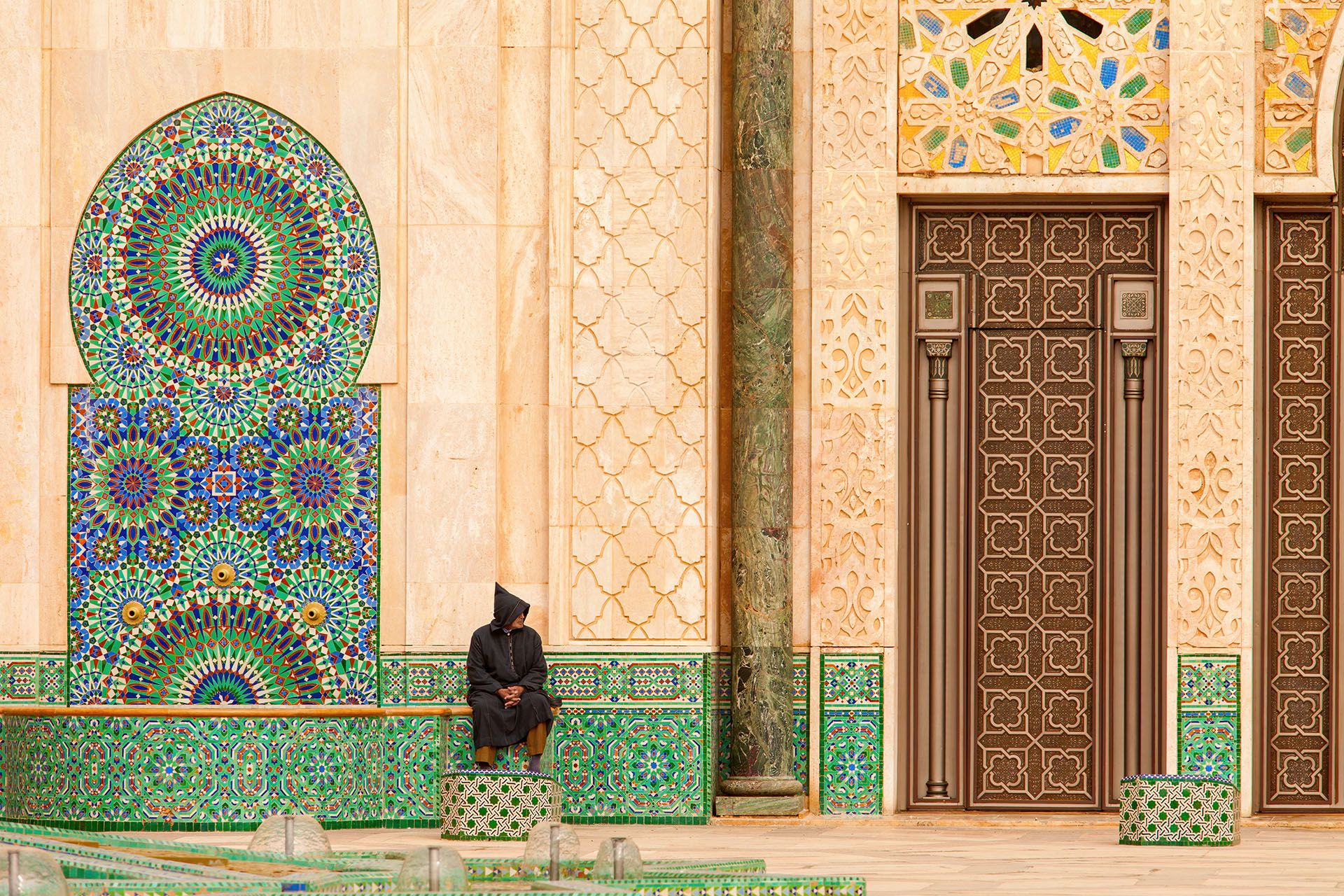
The Hassan II Mosque or Grande Mosquée Hassan II, Casablanca © Shutterstock
Here are some essential tips for a memorable journey through Morocco in April.
What to pack for Morocco in June?
June in Morocco brings the onset of summer, demanding lightweight and airy clothing to combat the rising temperatures. Pack breathable fabrics like cotton and linen, along with a mix of short-sleeved and long-sleeved options for versatility. A swimsuit is advisable for coastal regions.
Insect repellent can also come in handy, especially for outdoor activities, while a light jacket or shawl might be useful for cooler evenings.
Prepare for heat
Given the intensifying summer heat, it's crucial to prepare accordingly. Don’t forget to use wide-brimmed hats and high-SPF sunscreen. Hydration is key, so ensure you have a reusable water bottle on hand to stay refreshed throughout your explorations.
Learn language basics
Enrich your travel experience by learning some basic phrases in the local language. This not only facilitates communication but also demonstrates respect for the culture. Consider mastering greetings, thank-you expressions, and other common phrases to enhance your interactions with the warm and welcoming people of Morocco.
Want to be better prepared for your trip to Morocco? Also read our useful tips for travelling to Morocco .

The weather in Morocco in June is great for discovering the souks of Fez © Shutterstock
June in Morocco brings a tapestry of cultural festivities, natural wonders, and serene escapes. Here’s our pick of the best things to do in Morocco in June.
Eid al-Fitr
Commence June with the joyous celebration of Eid al-Fitr. Join the locals in the festivities marking the end of Ramadan, experiencing the vibrant atmosphere, delicious feasts, and the spirit of togetherness that permeates the streets.
Moussem of Moulay Abdellah Amghar
Immerse yourself in the spiritual ambience of the Moussem of Moulay Abdellah Amghar. June brings this traditional pilgrimage, where locals gather to honour their saint. Witness the rituals, music, and dance that make this event a cultural gem.
Marrakech gardens
Escape the summer heat by exploring the lush oases of Marrakech Gardens. June offers the perfect weather to stroll through the intricately designed landscapes of Jardin Majorelle and the Menara Gardens, where the vibrant colours and fragrant blooms create a tranquil haven.
Planning a trip to Marrakech? Start preparing for your trip with our guide to the best accommodation options in Marrakech .

The weather in Morocco in June is great for beaches © Shutterstock
Cooling off in the Ouzoud Falls
Beat the summer warmth by venturing to the majestic Ouzoud Falls. Enjoy a refreshing dip in the cascading waters surrounded by lush greenery. June's pleasant temperatures make this natural spectacle an ideal destination for a cooling and enchanting retreat.
Stargazing in the desert
June nights in the Moroccan desert offer a celestial spectacle. Venture into the vast expanse of the Sahara for an unforgettable stargazing experience. The clear skies reveal a mesmerizing display of stars, creating a magical backdrop for an evening of wonder.
Picnics in the Royal Gardens
Embrace the outdoors with a delightful picnic in Morocco's Royal Gardens. June's mild weather provides the perfect setting to relax amidst the scenic beauty of these meticulously landscaped spaces. Indulge in local treats while surrounded by the tranquility of nature.
Uncover the enchanting allure of Morocco with the guidance of our local travel experts . We take care of every detail of the planning and booking for your adventure.
Whenever you're ready to set off on your journey, contact us , and we'll create a tailor-made itinerary to suit your desires. Explore our existing Morocco itineraries for inspiration, knowing that each one can be adjusted to meet your specific preferences .
Visit Morocco in other months
- Best time to visit Morocco
- Morocco weather in November
- Morocco weather in December
- Morocco weather in January
- Morocco weather in March
- Morocco weather in April
- Morocco weather in February
- Morocco weather in May
- Morocco weather in September
- Morocco weather in July
- Morocco weather in August
- Morocco weather in October
The Rough Guides to Morocco and related travel guides
In-depth, easy-to-use travel guides filled with expert advice.

Travel advice for Morocco
From travel safety to visa requirements, discover the best tips for traveling to Morocco
- Culture and Etiquette in Morocco
- Eating and drinking in Morocco
- How to get to Morocco
- How to get around in Morocco
- Shopping tips for Morocco
- Tips and travel advice for Morocco
- Travelling with children in Morocco
- How to get a Morocco Visa
Find even more inspiration here

written by Dre Roelandt
updated 20.05.2024
Dre Roelandt is originally from the United States but lives and works in Berlin, Germany. Dre is a freelance writer and artist with a passion for travelling. They are an in-house Content Editor at Rough Guides.
Ready to travel and discover Morocco?
Get support from our local experts for stress-free planning & worry-free travels.
- Where to stay
- Travel advice

COMMENTS
From June to August, the weather is typically hot, dry and sunny with average temperatures in the 90s, lows in the upper 60s. Rainfall totals of under an inch per month from May through September, making this the best time of year to visit Morocco's oldest imperial city. The Atlas Mountains.
September is the best month for good weather and fewer crowds. Domestic and international travelers head back to school and work after the August summer holidays, so September is a great time to visit. ... you can travel comfortably to Morocco's portion of the Sahara Desert - expect to find most desert camps closed from June to August due ...
The Weather in Morocco . For many visitors, Morocco's weather is the single largest factor in determining the best time to travel. Morocco follows the same basic seasonal pattern as any other Northern Hemisphere country, with winter lasting from December to February and summer lasting from June to August.
Best time to visit. The best time to visit Morocco is during spring (mid-March to May) or fall (September to October). The weather is warm but pleasant, unlike the cold temperatures and snow of winter, or the scorching heat of summer. The coastal regions can be visited year-round. In the winter they are pleasantly mild, while in the summer they ...
The peak tourist season in Morocco spans from the months of March to May and September to November. During these periods, the weather is generally pleasant, with mild temperatures and lower chances of rainfall. It's an ideal time to explore the imperial cities of Marrakech, Fes, and Rabat, where bustling medinas, ancient palaces, and vibrant ...
Table of Contents. The Perfect Timetable for Your Morocco Trip. January - February: A Cool Winter Escape. March - April: Springtime Blossoms. May - June: Basking in the Sun. July - August: The Hottest Months. September - October: A Golden Autumn. November - December: A Cultural Winter Experience. Conclusion:
In Casablanca, the average temperature ranges from 13 °C (55.5 °F) in January to 24 °C (75 °F) in August. The rains are rarer than in Tangiers, in fact they amount to about 400 mm (16 in) a year, and are concentrated from November to April. In Casablanca too, the sea is not warm, however, it reaches 23.5 °C (74.5 °F) in August.
The weather in Morocco is always warmer than in Europe. In April, May and October, you can't really go wrong as the weather is at its best in all regions of Morocco. Dry heat in Morocco is more bearable than you might expect. 42°C in Merzouga is better than 30°C in humid Berlin.
Best time to visit Morocco. The best time to visit Morocco is generally during the autumn (September-November) or early spring (March-April), but Morocco is a year-round destination. The weather is warm, but you'll avoid the scorching heat and cold nights. Whatever time of year you visit, there's always something special about Morocco.
The best times to visit Morocco for ideal weather are. February 26th to June 24th. or. September 17th to November 25th. based on average temperature and humidity from NOAA (the National Oceanic and Atmospheric Administration). Read below for more weather and travel details.
September: September is a great time to visit Morocco, with temperatures ranging from 19°C (66°F) in the north to 31°C (88°F) in the south. It's sunny and warm, but not too hot. October: October is another great time to visit Morocco, with temperatures ranging from 16°C (61°F) in the north to 27°C (81°F) in the south.
November temperatures in Morocco's mountains. For those looking to explore the Atlas Mountains, November offers cool and crisp weather. The daytime temperatures in mountainous areas like Ifrane and Midelt average around 15°C (59°F). However, the nights can be quite cold, with temperatures dropping to 0°C (32°F) or even lower.
When to go to Morocco? Knowing the differences between coastal regions and inland, the summer months from July to October can be recommended as the best time to travel in Morocco for a seaside holiday. Destinations such as Agadir and Casablanca now have perfect conditions with pleasantly warm day temperatures and a water temperature of 19 °C to 22 °C suitable for swimming.
In inland Morocco, winter temperatures are somewhat lower, so you'll need a coat, and in summer it can be very hot. In the mountains it'll be even colder, so you'll need to really bundle up in autumn and winter (in the Atlas, the cold lasts for 6 or more months). In the desert, you'll need to take more precautions.
July temperatures in northern Morocco (cities like Tangierand Tetouan) typically range from 20°C to 35°C, with coastal areas experiencing milder temperatures and slightly warmer conditions inland. Temperatures in central Morocco. Central Morocco (cities like Rabatand Casablanca) sees July temperatures ranging from 25°C to 40°C, with ...
Air & sea temperatures in Morocco in September. In September, Morocco experiences warm temperatures, with average air temperatures ranging from 20°C to 30°C, while sea temperatures along the coast generally range between 20°C and 23°C. September temperatures in northern Morocco.
Weather. November means cool weather and shorter days in Morocco, with occasional rain showers. In the Atlas Mountains, the daily temperature average in November is 62°F, with highs in the low seventies — ideal weather for hiking. Conditions are also pleasant for outdoor activities (though not swimming or sunbathing) on the Atlantic coast ...
WEATHER IN MOROCCO IN DECEMBER. The weather definitely cools down quite a bit in Morocco in December. Temperatures in Marrakech average 14°C degrees during the day, and are quite a bit cooler after dark. There is also a fair chance that you will run into rain at some point on your visit, as December is one of Morocco's rainiest months.
Weather In February, the weather is most comfortable in the southern sections of Morocco. In Marrakech, days are sunny and highs hover around 70°F, with lows dipping into the lower 50s. It's chillier in the north, with more cloud cover: in Tangier, highs are in the low sixties, and most days are gray. Though temperatures can climb to the upper 60s in the Atlas Mountains, it's much colder at ...
Weather in Morocco. Much of Morocco 's weather is typical of a four-season climate - super hot in the summer without much rain, winter turning wet, snowy and humid with milder conditions, and the shoulder seasons of autumn and spring acting as usual, with warm to mild temperatures. A common misconception about Morocco is that the country is ...
This site is owned by Apa Digital AG, Bahnhofplatz 6, 8854 Siebnen, Switzerland. Rough Guides® is a trademark owned by Apa Group with its headquarters at 7 Bell Yard London WC2A 2JR, United Kingdom. Discover the perfect experience with our expert guide on the weather in Morocco in October. Let Rough Guides travel experts help you plan your trip.
Air & sea temperatures in Morocco in June. In June, Morocco experiences warm temperatures, with average air temperatures ranging from 20°C to 35°C, while sea temperatures along the coast generally range between 18°C and 21°C. Temperatures in northern Morocco.
Weather. Coming right on the heels of the hottest month in Morocco, September can be sweltering or relatively comfortable, depending on where you go. In Marrakech, it's cool enough for sightseeing (80°F is the daily average) but it's still too hot for adventures in the nearby Sahara Desert. It can be oppressively hot in other inland areas, as ...
Morocco Weather In April 2024 April in Morocco is a time of intense beauty and variety. The country's varied geography and climate create a stunningly diverse array of landscapes and weather patterns. From the vibrant colors of the Sahara Desert to the snowcapped peaks of the Atlas Mountains, Morocco has something to offer every type of traveler.